It’s been now 4 years since Stryd first landed on the market as a running power meter. Back then, it was initially a running shorts pod before becoming a chest strap, and the company eventually shifted to a single footpod design about three years ago. Now, with their next generation footpod they’re incorporating wind detection hardware and algorithms to determine the impact of wind on a runner.
Now before we get too far into this, some will try and argue that this isn’t a ‘power meter’. However, that’s largely a backwards and dated way of thinking. Ultimately one has to realize that every power meter is part hardware and part software algorithms. Whether or not this one uses wind and accelerometers to measure power versus some element of direct force is inconsequential. What matters is whether or not it can do it accurately. The cycling power meter and trainer market is littered with examples of crappy so-called ‘direct force’ power meters, and very functional non-direct force power meters. Some arbitrary distinction no longer matters in accuracy. Either it sucks or it doesn’t. And no, the argument of “it’s at least consistent” doesn’t fly in these parts.
However, don’t mistake the preceding paragraph as me saying Stryd is accurate. Oh god no. Not because I think they’re inaccurate, nor because I think they are accurate. But rather, because I haven’t decided yet. Mind you, I suspect there’s nobody in this world that has tried more running power meters than I’ve donned, the vast majority of them from companies that have either never made it to market, or not survived their first year. So the fact that Stryd is still around is saying something. But I also wouldn’t call them the gold standard either, since I don’t believe such a term exists for running power meters yet for a variety of reasons (or many other devices for that matter).
Got all that caveating? Good. Let’s talk tech then. Don’t worry, we’ll get back to accuracy in a bit.
What’s New:
In many ways you’ll look at the exterior of this pod and assume it’s the same (new one is left with orange clip, right with black clip is old). After all, it sure looks like it. But internally there’s some substantial hardware changes that make the existing pods unable to include this functionality via simple firmware update. So no, the existing Stryd units don’t have the correct hardware (namely the temperature and humidity sensors, as well as clip/shell) to enable this via simple firmware update.
Here’s what’s changed though, according to Stryd (and they walked me through the internals of an actual pod as well earlier this spring):
– New shoe clip designed to properly funnel wind to sensor
– Added temperature and humidity sensors
– Added magnetometer for improved accuracy and future features
– Increased storage 64x over previous unit, to aide in higher storage requirements for captured data, and allowing more data to be captured
– Brighter & more clear LED status light
– Raised the price from $199 to $219 (but now it includes shipping, so basically a wash)
– Ditched wireless charging in favor of small charging cradle
– Increased antenna range to deal with Garmin’s poor Fenix 5 lineup antenna reception
Ok, the last one they didn’t officially specify Garmin’s Fenix 5, officially it says “no matter your phone or sports watch”, but everyone knows that’s really what they mean. Unfortunately, it’s probably a bit late for that for most people.
In any case, the biggest ticket item here people care about is that the unit itself now accounts for the impacts of wind. Up until now, it was the single biggest issue with Stryd (and most other running power meters): It didn’t account for headwinds or tailwinds. And no matter how many times these companies tried to pretend that headwinds didn’t matter to running power, they were seriously talking to the wrong person. As a poor sap that has run an entire one-way marathon into a non-stop headwind once, I knew full well that a headwind made a huge difference on race day. Never understood pretending it didn’t.
The new Stryd pod has changed the positioning of the clip to allow for better airflow into the pod, which in turn allows them to measure wind more accurately. That meant not just changing the clip and case, but also then dealing with better waterproofing to the pod, including a new membrane inside the pod to ensure that changes in pressure get in, but not water running through puddles. Starting first, here’s the pod itself, compared to the old pod. This is looking at it upside-down with the front facing the bottom:
Next, you can see most notably the new hole/gap in the front of the orange pod clip, which allows the airflow to come into the pod:
Note that the back of the clip was also changed, such that it forces you to always clip it in back first, whereas the existing pod could technically be done both ways but was apparently supposed to only be done one way (and the other could lead to damage).
For the charging aspect, gone is the oversized wireless charging mat, and instead we’ve got a small cradle. This is a much better solution, which in turn connects to micro-USB. Would have liked to seen USB-C here, but at least it’s not the near shoe-sized charging pad anymore that you had to bring when you traveled. At right below, you can see the contact ports for the charging dock next to the pod.
Beyond that, all interface aspects are the same. It still connects to your Garmin, Suunto, Polar, or Apple Watch wearables through their respective apps or native integrations. We can debate the pros and cons of those in the full review (it’s not as easy as saying one is absolutely better than the others, as there’s lots of nuances to each). And the data still shows up the same way as well, showing you wattage on your watch depending on the exact device/format/app/etc…
Again, all things we can discuss in more depth down the road, but all things that haven’t changed. Note that as of this very second, whether or not it’ll display wind speed is a bit unclear. They have a prototype app that displays/records it, but it’s not in the production app yet. They do understand the value there in that though, so hopefully that makes the cut sooner rather than later.
Testing in The Tunnel:
I’ll be honest: I mostly dread going to the wind tunnel.
Sure, it looks cool and all, but it’s fraught with failure. Last fall I spent time with some of the smartest people in the sports aerodynamics industry in a wind tunnel. And the net output of that was basically a whiteboard full of ways one could fail doing tests in a wind tunnel. Not ways the product could fail, but just ways the process of testing could fail.
So while I enjoy the concept of wind tunnel days, I also despise them for the reality of a damned if you do, damned if you don’t. I’ve got no doubt there will be someone in the comments who said we’ve done something wrong. And that’s likely, in fact, we found a few things that didn’t work setup-wise. Some of them obvious, some of them less so.
Ultimately we put about 30 kilometers of running today on a treadmill in the tunnel, and oh, we had some ‘smart people’ there. From the aerodynamics side of the house, the full time engineers at the DNW Wind Tunnels (German-Dutch Wind Tunnels) helped with logistics and running the tests, as well as giving thoughts on setup/etc. Their job is to manage aerodynamics tests almost every day of the year for everything from special classified military projects, to commercial airliners, to silly running things.
Next, there was Ron Van Megen & Hans Van Dijk, behind the book The Secret of Running: Maximum Performance Gains Through Effective Power Metering and Training Analysis (Meyer & Meyer Premium). They had a bunch of data from their research and others’ research around the area of running efficiency, including numerous white papers on running with power meters. Certainly Stryd brought them there, but I didn’t see any bias towards Stryd in our discussions.
They were pretty even in my discussions with them. We discussed some of the variances between running power meters and more importantly their algorithms. They had some good insights, specifically into the never-ending debate on whether one unit is right or not. Most of which simply boils down to different units actually reporting slightly different metrics all bundled under the heading ‘running power’. We talked specifically for example about how Stryd relates to Polar & Garmin running power algorithms. There was no discussion of one being the absolute right answer, rather, just different ways of presenting similar data. You’ll find numerous white papers they’ve written on the topic here (I don’t necessarily agree with every statement, but learning is fun). But the super short oversimplified version is that Garmin and Polar include the elastic recoil/rebound output in their power numbers, whereas Stryd doesn’t. Some pros and cons to both methods.
And finally, Stryd themselves was there in the tunnel as well as connected via a group Skype call back to their headquarters in Boulder, where they were enjoying being up at a god-awful hour of the morning.
Oh, right, and there was me too. I basically just ran, mostly with the goal of not falling off the back of the treadmill with near-tropical storm winds, thus ending up in a turbine somewhere.
The test protocol was simple. First, it involved relocating my treadmill from the DCR Cave to the secured wind tunnel facility/base over an hour away. I gave them a key to the studio, went on vacation, and said ‘Y’all have fun with that.’ Having moved said treadmill some four times now, I’ve long since learned I’d rather shovel cow pies than move that twirling finger-slicing beast around. I noticed the Stryd person was wearing a wrist injury brace after they moved it. No idea if those two were connected.
But they got it moved, and then got it bolted into the wind tunnel. While this tunnel was not the supersonic tunnel (which is capable of speeds up to Mach 1.3), this particular tunnel could still unleash precise winds up to 288KPH (179MPH). Homey didn’t want my treadmill becoming hurricane fodder.
Next, the scientist guys proposed a specific protocol. It was straightforward and pretty easy to validate the basics of the Stryd device from a wind perspective.
1. Run at 10KPH/6.2MPH on the treadmill (the pace specifically a bit slow/easy to allow us to account for higher winds later in the test)
2. Start at 0 m/s wind speed. Run for ~3 minutes
3. Increase wind speed in steps of 3 m/s, run for 3 minutes
4. Max wind speed is 15 m/s (54KPH/33.6KPH)
5. Repeat for 3 runners (at least).
6. If time allowed, repeat test at a 45° yaw angle (cross-wind basically)
And basically, that’s exactly what we did. In addition to running with the new Stryd pod, I also ran concurrently with my older Stryd pod (the ‘current’ generation prior to today). Both were configured with exactly the same weight, with one on each shoe. First however, a couple of ‘known’ issues/notables/etc… with our plan:
1. We didn’t know exactly how the airflow over the lip or posts of the treadmill would impact actual wind speed that hit the shoes
2. We knew that stabilization of the tunnel wind speeds at this specific velocity would take about 30-45-seconds, so we budgeted 60 seconds for safety each time the wind speed changed between test levels
3. We ended up going with 10.7KPH on the treadmill as the displayed speed, as that’s what the Stryd said was 10KPH, just to keep later math easier between everyone.
4. We didn’t know what we didn’t know.
I say the last one, because frankly there’s very few people in this entire world that have put treadmills inside wind tunnels. And even fewer that have bothered to measure it in a useful manner. And yet fewer still that have shared that data and their learnings. Sometimes ya gotta try (and fail) in order to learn.
Lastly, I collected *all my own data*. By that I mean that Stryd had no control/access to my data before I did. I paired their new sensor directly to my watches and downloaded the data directly from my Garmin watches (MARQ Athlete and FR935) to my computer (.FIT files). I also used one of their watches as a backup (FR245) with their latest app, and downloaded the data using my own cable. I note that because no post-processing was occurring here. It was all real-time measurements. Said differently: They couldn’t fudge the numbers before I could see them.
Without further rambling, here’s the only chart you care about. It shows the non-wind capable existing Stryd footpod power meter against the wind-capable unit, from a power output standpoint. You’ll note that the older Stryd unit basically stays ‘flat’ the entire time (as the treadmill pace was constant), whereas the newer unit rises as the wind speed rises.
Super cool, huh? And yup, that data all shows up in the DCR Analyzer (in fact, so does wind speed!). So, to roughly simplify this, here’s some key points:
At 0 KPH/0MPH: Both units were within a few watts
At 10.8 KPH/6.7 MPH: Very little difference as well, only a few watts higher wind resistance
At 32.4 KPH/20.1 MPH: Big jump here, roughly a 50w increase in power required, and about a 10bpm HR rise
At 43.2KPH/26.8 MPH: Another big jump, roughly a 90-100w increase over baseline, and a 20bpm HR rise over baseline
I’ve skipped a few lines in the summary above, though you can see them in the chart above, or also at the full dataset here. We should have the wind tunnel data facility by tomorrow, which shows the super-precise measured tunnel speeds, though the approx speeds are rounded/listed above.
So next, what about wind speed? For that Stryd had a special Garmin Connect IQ app that showed wind speed, both real-time and a slightly corrected one based on some of their algorithms. Note the wind tunnel speed was measured by more pitot tubes than I could count. Seriously, I stopped counting after getting to something like 8-10 pitot tubes around the tunnel. Here’s how those numbers played out (I’m using approximate, because there’s slight variations in the numbers depending on which points in the 3-minute steps we use). Also, I’m using MPH because it’s just the mode the app was in, since I’m tired of re-converting numbers three ways right now and for this bit you’re just looking at variance anyway.
Wind Tunnel Speed (MPH) vs Stryd Reported Wind Speed (MPH):
0 MPH | 0 MPH
6.7MPH | ~6.8MPH
13.4MPH | ~11.9MPH
20.1MPH | ~20.3MPH
26.8MPH | ~29.3MPH
33.6MPH | ~~40MPH
As you can see, at some wind speeds it was pretty close, and others less so. So why the variation? Well, likely the test setup is one factor. In an ideal setup the treadmill itself would be flush with the floor. In this case, the wind is going to create a zone both above and below the treadmill that can cause funkiness in airflow speeds right about the part where my foot is. In fact, all three of us running notices that if we shifted slightly forward or back on the treadmill belt, it’d change the wind speeds slightly.
Still, for the majority of speeds we cared about (lower speeds at 20MPH or so), it was very very very close.
Next, what about cross-winds? Such as an offset wind at 45° to the runner? No problem, the wind tunnel systems can rotate the treadmill automagically:
Except, that immediately introduced a new issue. The supports of the display/control portion of the treadmill created a blocker for the footpod, but not in the way you’d probably think. However it was also something that the resident wind tunnel engineers expected would happen. The output wattage by Stryd was far higher than it should have been, because the measured speed was as well. Basically, the air flowing around the pole was going faster to account for the pole. We can get into all sorts of aerodynamics on why this happens, but there’s an entire internet out there for you if you want to.
The net result was that the data we collected during this test was throwaway due to the test setup. Stryd did show me some data they collected in another wind tunnel with two other athletes where they were able to remove the support pillars of the treadmill, and in that case it showed the power output at approx 70% of the non-yaw headwind power (which is where it should be math-wise). I don’t really have a reason to doubt them, but inversely I have no method to prove it out here myself with the gear I have.
Finally, before folks ask – while I have actually run briefly with a test unit outside in the real world back earlier this spring, it was an early prototype and didn’t record data (I could only see it real-time). Further, I didn’t leave this test with a pod of my own. So I can’t do any more tests until mid-July when they expect to have a final production pod ready. The good news is that winds are plentiful here in the Netherlands, so it’s easy enough to test once I get one. Though by the same token, the data won’t likely be as super clean as the above.
Also, while I had hoped we’d be able to test flipping the treadmill around and doing a tailwind, we simply ran out of time for that (the tunnel operates on a super strict time table). Fear not, I’ll be doing tailwind tests once I get a pod outdoors. After all, those are the best kind of tests.
Going Forward:
So, where do we stand?
Well, at first glance after some initial testing I’d say that the results are promising. Lack of accounting for wind has always been one of my biggest sticking points with running power (alongside lack of consistency between vendors). This may indeed solve for that. While tunnels are great for proving out specific use test scenarios such as this, I still prefer significant on-road time outdoors with variable conditions. Including tailwinds and more cross-wind work. Still, the numbers we see here match both the wind power-science math numbers as well as most of the practical wind speeds from the tunnel itself.
These new Stryd pods will start shipping late July according to the company, which I suspect is probably in the ballpark. Though my gut feeling is probably closer to early August before folks actually see them. Just a hunch. Either way, Stryd’s hoping to have a final production review unit to me by mid-July to start digging into more tests with. Which would then put a review sometime in late August, maybe mid-August. Really just depends on when a unit arrives.
With that – thanks for reading~
FOUND THIS POST USEFUL? SUPPORT THE SITE!
Hopefully, you found this post useful. The website is really a labor of love, so please consider becoming a DC RAINMAKER Supporter. This gets you an ad-free experience, and access to our (mostly) bi-monthly behind-the-scenes video series of “Shed Talkin’”.
Support DCRainMaker - Shop on Amazon
Otherwise, perhaps consider using the below link if shopping on Amazon. As an Amazon Associate, I earn from qualifying purchases. It doesn’t cost you anything extra, but your purchases help support this website a lot. It could simply be buying toilet paper, or this pizza oven we use and love.

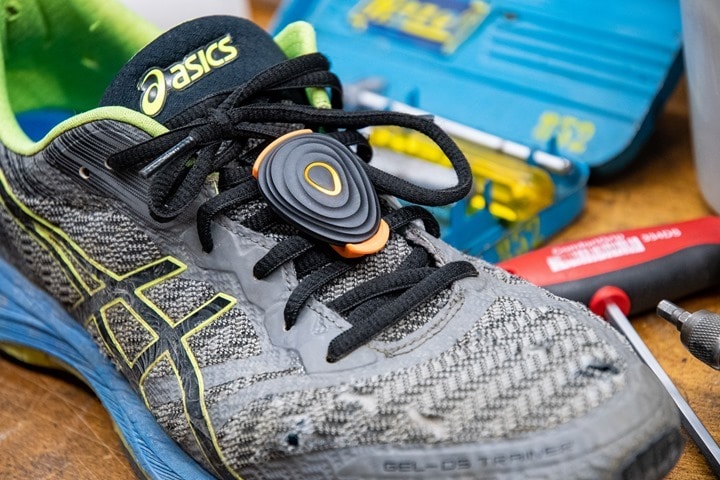
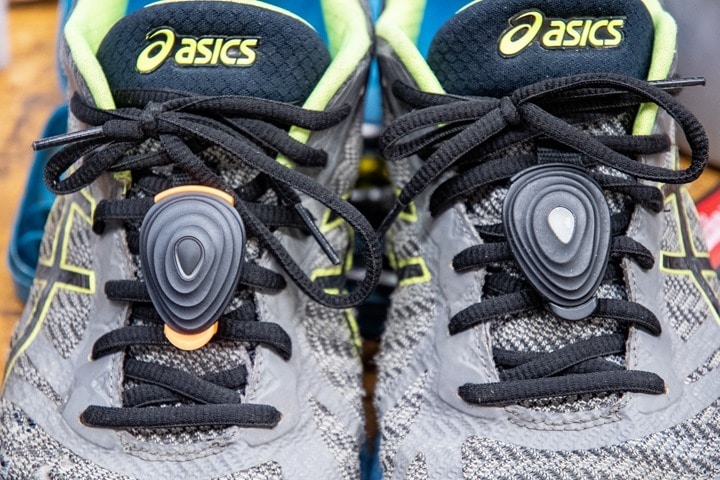
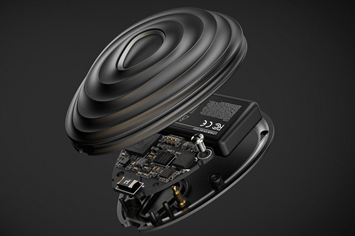
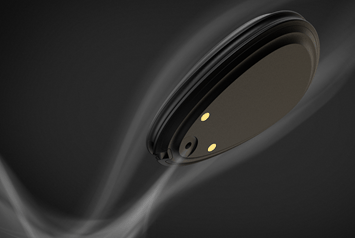
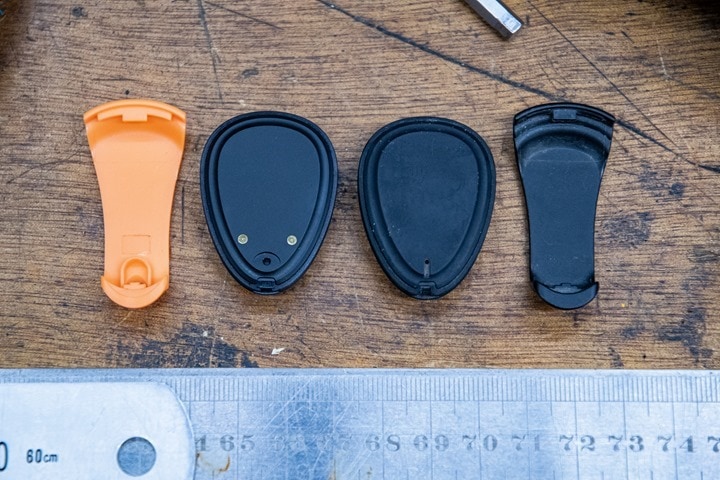
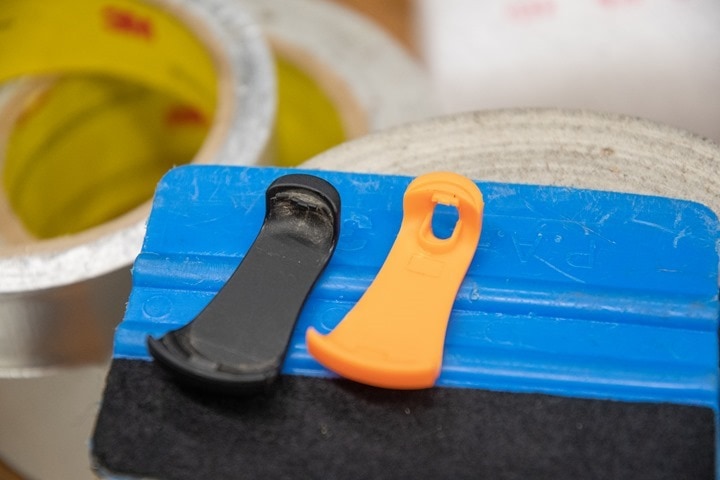
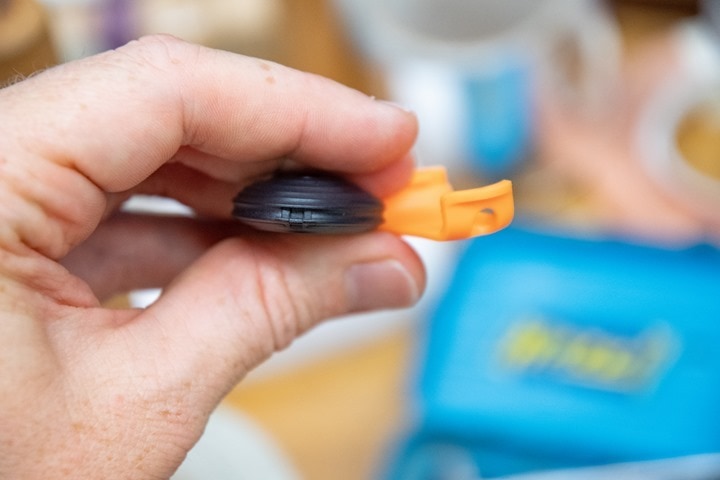
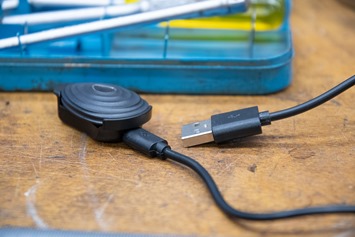
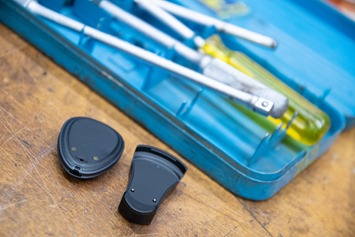
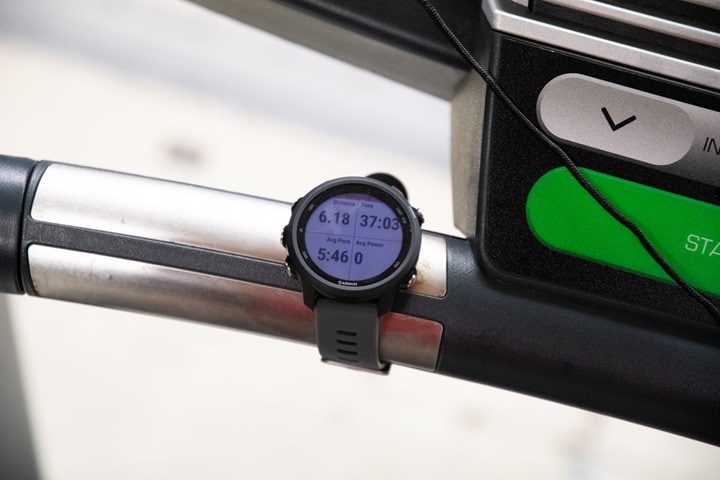
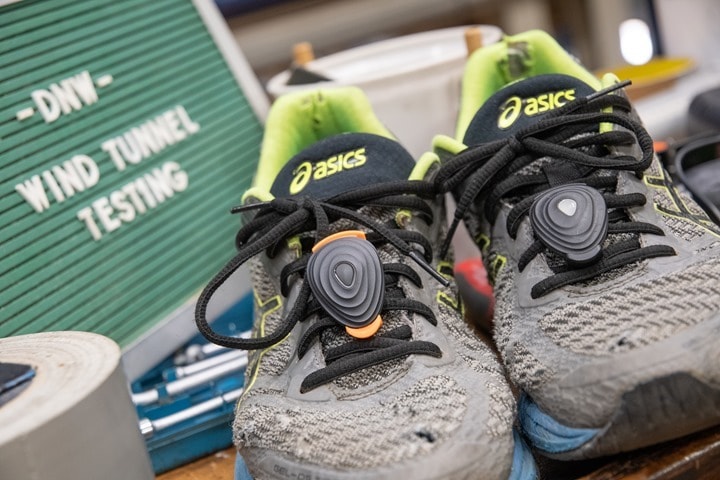
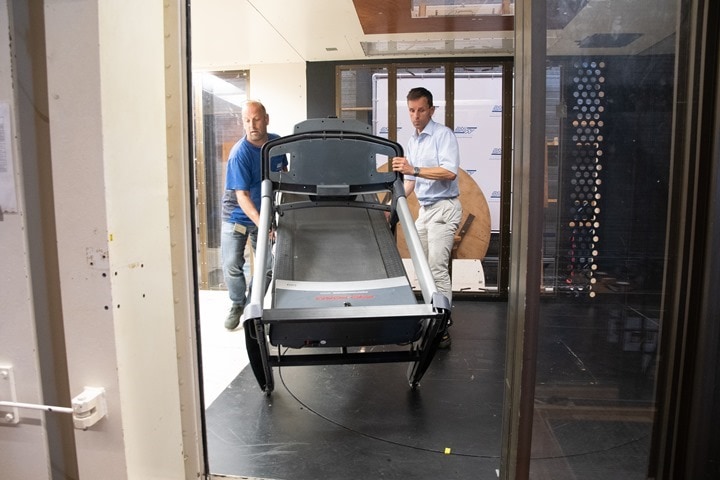
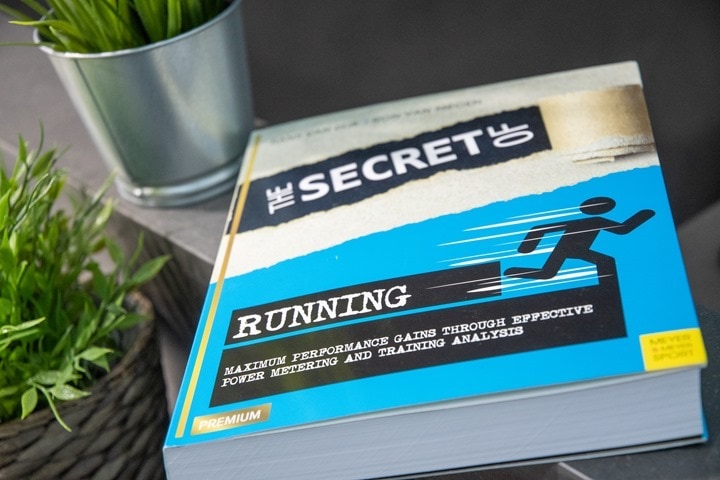
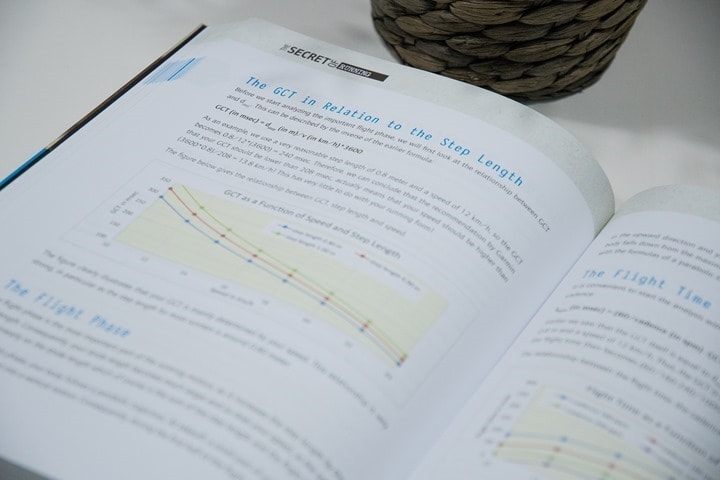
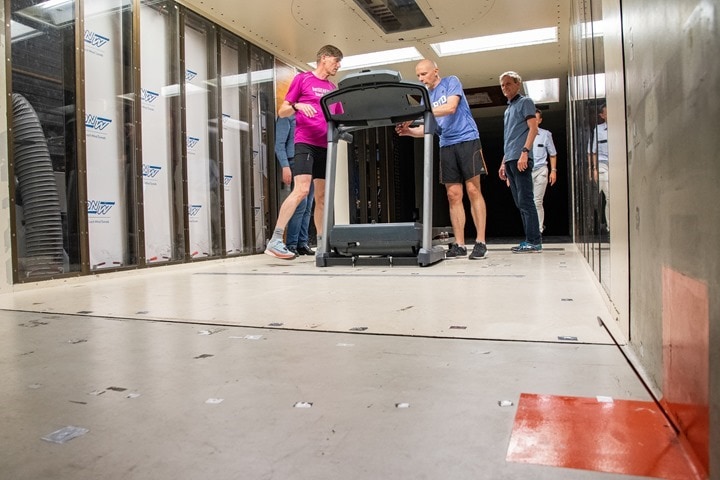
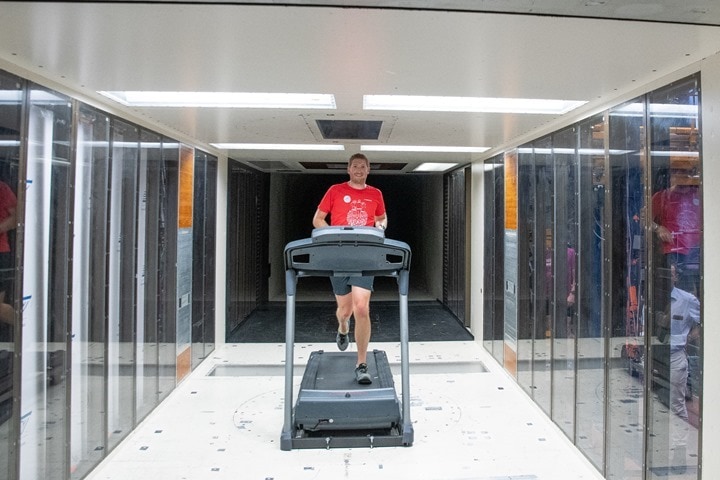
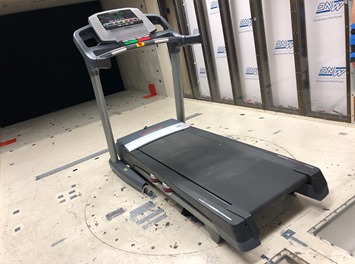
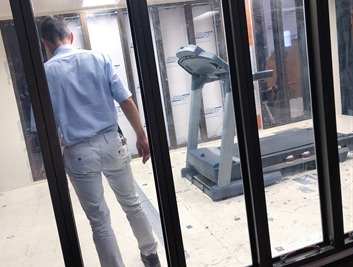


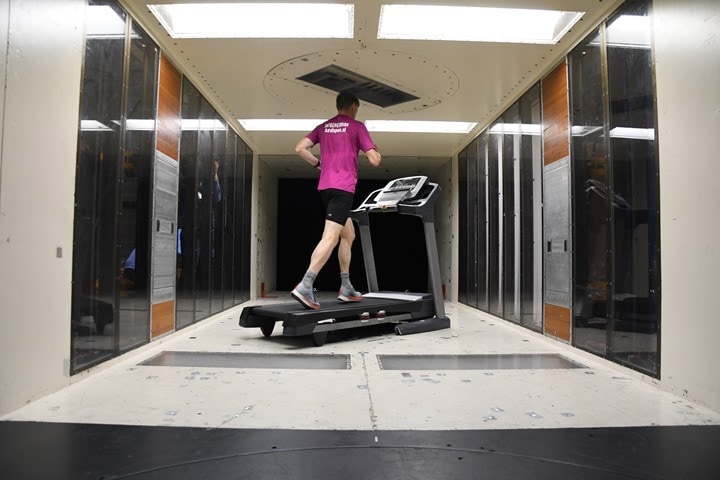
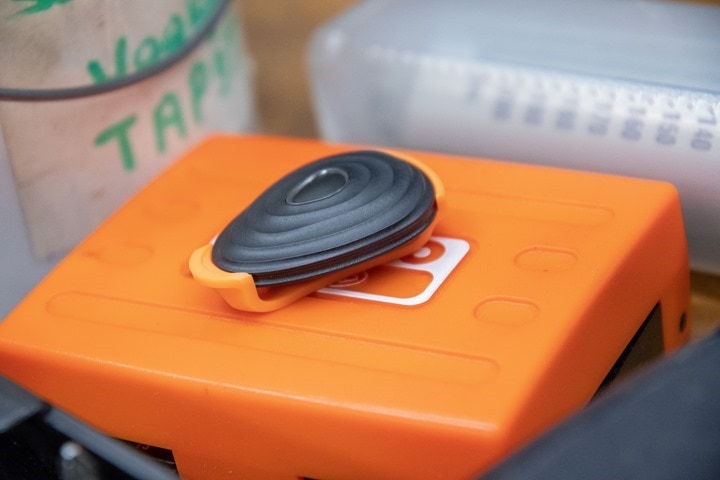
















I’ve been a Stryd fan for awhile and I’m excited for this iteration. They mentioned the new magnetic sensor as enabling new features down the road. Any educated guesses or NDA free light you can shed on that? Alse tt’s awesome that they got the Secret of Running guys in the tunnel with you. Have you tried convincing the Stryd guys to get you onto the force plate treadmill out in Colorado with your boatload of power meters?
Noting I can share at the moment.
As for the force plate treadmills, that might be interesting at some point. But there’s also other places that have that as well.
Very interesting. Stryd themselves seemed singularly lacking in providing any run data at all. This suggests wind makes little difference to at least 10 mph and only significantly over maybe 15 mph. So maybe at least 50% of the time this might add nothing for me as 10 mph is probably about an average wind in my parts. Similar to my actual experience I would say. Also it has also taught that if you want to test Stryds on a treadmill in a wind tunnel you need to shorter than my 1.95m else you will bang your head 🙂
Yeah, it was definitely close to the top!
As for power increases, one thing to keep in mind is that like cycling power, if you do, say, a 20w bump when you’re very close to the ‘edge’ of capabilities, that’s a massive bump in power terms and likely downstream to HR, especially for something like a marathon if you’re already fighting another battle (such as heat that day).
Like you noted though, at lesser speeds the impact is minimal, while at higher speeds it’s massive.
Hey Tim,
Angus from Stryd here.
It is important to note that a runner on the treadmill is running “in place.” The only air resistance being generated is from the wind.
When running outdoors, a runner is overcoming air resistance equal to their running speed and the wind speed. i.e. If you are running at 10MPH, a wind of only 5MPH would be needed to reach 15MPH of air resistance. If you are running outdoors, it would not be uncommon to run into a situation where air resistance matters.
A white paper focusing on the new Stryd’s accuracy is forthcoming.
Best,
Angus
The power to overcome wind force is cube(windspeed). Therefore you see increasing jumps in power.
Angus,
How does Stryd estimate the drag coefficient of the runner? Is there a great variance between runners?
Good point!
“Certainly Stryd brought them there, but I didn’t see any bias towards Stryd in our discussions.”
But Stryd works with those two authors Ron Van Megen & Hans Van Dij. Stryd even sells their book on stryd.com. So I would say they are biased towards Stryd. They have a financial relationship.
I’d re-read what I wrote, specifically this part:
“in our discussions”
Meaning, in my discussions with them, there was no bias towards Stryd. The discussion was super limited in most ways because frankly we were busy running. But the bits of discussion we did had didn’t have biased elements in there that I’d see. As noted, they were fairly open on the differences between the technologies and how each one gets to the number they were at, which is mostly where the conversation ended.
You can read plenty of their whitepapers online. I don’t necessarily agree with everything in those papers either, but, that’s again, not what my comment was in reference to above.
I was going to point this out. Im disappointing you were less than transparent here but I’ve found that’s par for the course with styrd. They have a number of marketing/ambassador deals with bloggers who often bury the connection.
Makes me not trust you really.
While I definitely agree with you that Stryd has lots of ‘ambassadors’ and such that don’t often disclose that, that’s not the case here, no matter how much conspiracy theory you want to throw at it.
Again, the discussions I had with them were very specific to exactly one topic and basically one question, in which they presented an even response between the differences that didn’t favor any company. I know, doesn’t fit the conspiracy narrative…but sometimes that’s life.
Ray,
Give me a break. I never mentioned you as one of the ambassadors nor implied it.
I see instead of addressing the criticism you try to delegitimize it by saying something I never said. It’s extremely childish and disappointing from someone who claims to be a professional.
You are playing the semantics game with Ron Van Megan and Ron Van Dij. Any real journalism would have added a one sentence editor’s note about their well documented relationship with Stryd. And that’s all you had to do but instead you criticize those who question.
It has nothing to do with conspiracy theories but more to do with integrity. People read your stuff because they think you are fair and unbiased. When you pull this stuff (and other things you do) it weakens that perception.
Do us all a favor Mr. “T” for TROLL.
Go hide under the bridge you came from.
I guess I don’t have some full accounting of their past relationship, and given my comments regarding their comments were a total of one sentence, I just left it as “Certainly Stryd brought them there, but I didn’t see any bias towards Stryd in our discussions.”
Most would argue ‘Stryd brought them there”, as a pretty clear indication of things. But I wasn’t sitting there about to ask them exactly how much they got paid to be there (if anything) – mostly cause frankly I didn’t have much time to talk to them till the very end. Also, that’d be no different than asking the wind tunnel guys how much they got paid. I didn’t use or state their opinions for anything in this piece related to Stryd. In fact, the opposite. I discussed why they thought their competitors were different than Stryd, and their answer matched what I had largely already known
I even added a note a couple hours later in the post that I don’t agree with all their whitepapers. Like it or not, I can’t go around claiming there’s some sort of financial connection there that I don’t have details of or confirmation of. Especially if it’s not true. Thus I did the best I could – which was point out that I don’t disagree with all their comments and they Stryd brought them there.
Finally, you can’t go around throwing out things like ‘childish’ comments when you use phrases like ‘claims to be’ and ‘makes me not trust you’, let alone all the random things you say on Twitter. Seriously.
The power needed to compensate wind force is cube(wind speed). Therefore you see bigger jumps.
Hallo Ray,
Currently a happy user of a V800 but looking for a replacement. I am thinking about the VV with or without Stryd or a 945.
Can I have your input on this puzzel?
Thanks,
Hans
That’s tougher. Polar in general does a better job at Garmin with things like power-based training programs/zones/etc. So if you’re loading up structured workouts and have zones targetted at running power, Polar would be the better option.
Inversely, Garmin does a better job at recording that data with deeper metrics via Connect IQ. And that’s going to be more critical when it comes to wind speed, which I suspect we’ll be unlikely to see on Polar/Suunto, whereas for Garmin, it’s actually a trivial thing for Stryd to add (and was what I tested today on their FR245, which did record the wind speed).
The effect of wind is right in line with my personal feeling I’ve had over the past two years of running with Stryd. I just never noticed anything unless it was 15mph or faster. Once the wind got to that level I definitely felt my perceived effort vs power was not in sync. It’s great to see this in a chart as well as the new Stryd actually accounting for it so that future races I can just focus on the power number.
Ive got a 945 and use a Garmin TriHRM, currently using a 80/20 Ironman plan on Training Peaks with the run plan based on power. Works really well and gives enough data. The TriHRM is cheaper than Stryd and not sure what extra Id get. If you think about Watts being a measure of effort and you use the same measure each time having set a benchmark, its all good. My observation would be to use it like I do on my bike…Set an FTP and then measure effort based upon race, i.e. IM c. 70% Hope that helps, PS the Spotify on the 945 with Powerbeats Pro is also great!
The point being that effort changes with the wind, which Garmin does not correct account for. The other additional benefit of Stryd is that they now automatically calculate your CP/FTP based on your training sessions. So now you’re more likely to be training with correct zones.
Is the new price $209 or $219? The Stryd website seems to say $209 but you say it is $219.
Hey Elliot,
Angus from Stryd here.
The new Stryd is priced at $219USD on our US store and that price is inclusive of shipping. The new Stryd is priced at $209 on our global store. That price is not inclusive of shipping because the shipping rates tend to be variable and a tad higher for international destinations.
While the listed price is higher for the new Stryd, the end price that the customer pays is about the same as the previous generation after accounting for shipping/taxes (depending on the jurisdiction).
Best,
Angus
$279 on your shop now. What’s behind that increase?
I’ve been using Stryd for the past 2 years, although mostly for its instant pacing data, which I’m finding although better than GPS, it is not perfect. My biggest issue with Stryd is the lag between reported pace and actual pace. I find that there is about a 5 second lag even with all the latest firmware updates. How is the new Stryd in regards to this? Is the pacing data more “instantaneous”? That is, once I stop running, how long does it report 0mph/kph?
second on this… hope the updated hardware can give a more fluid instant data, the 5sec lag is really annoying
The smoothing time is adjusted within Garmin Connect GUI. Most people set it to 3s.
Yeah, I used it as 3s as well.
I may be missing the point… but even 3s, would that be acceptable for a real time data?
For me at Garmin Express -> IQ Apps -> Stryd Power (button with three dots) I can choose from the following options:
Power averaging:
– Real time power
– 3 second power
– 10sec power
– 30sec power
– lap power
– overall power
However this is about power, not sure if these settings relate to speed/pace as well.
Also remember to set your watch to show speed/pace from stryd and not their own data (less precise GPS).
Another thing, this is only how power (and maybe pace??) is displayed, not how it is stored. It is still stored as real time even if you have it displayed as a floating average. While on the run I prefer to see an average of 3seconds’ data so that it doesn’t vary too much too quickly.
You need at least some level of smoothing simply due to spikes in the raw measurement data, otherwise you’ll see your pace flipping all the time.
Love my Stryd. Amazing pacing on hilly 70.3 courses.
Will the temp sensor write to the fit file?
At present it’s not. Though, that’s a good idea that maybe Stryd should consider.
(I’m generally a fan of writing any/all of that data to the .FIT file as Developer Fields. It’s trivial to do, and in most cases it provides useful support/academic/etc type data. I almost never hurts.)
Would be cool if it could be coupled as a temperature sensors to overwrite the wrist based temperature.
This
I’m a big fan of my current gen Stryd (especially for the more accurate pace/distance than GPS), and I’m sure I’ll upgrade eventually to the new generation. My 2 main wishlist items are:
1. When submerged briefly in water while trail running, the power spikes crazy high (like 500W higher) and then plummets for a while, presumably while the water drains out of the barometer. I’m not sure if I’m bothered about the spike, or just worried that I’m damaging my precious foot pod.
2. I would LOVE if the accelerometer was able to take into consideration treadmill incline. Several of my indoor workouts are at 15% to 40% grade, and I’ve stopped wearing the Stryd for them since the treadmill can export TCX files with (inaccurate) pace data, HR data, and elevation data. The Stryd’s measured power at a 40% grade “power” hike is super low (as you would expect).
Can I ditch my Tempe™ in favour of new Stryd???
Not at this point, they aren’t writing the temp data to a field. Though, that’d actually be super interesting. At first I was thinking as a .FIT Developer Field. But in reality, Tempe simply is an ANT+ sensor profile type (Temperature). They could trivially broadcast as a Tempe sensor too. That’d be super cool and have more uses beyond just running power (with zero cost to them).
I would totally consider the new Stryd just for that!
Meaning the combination of being an accurate pace sensor plus providing a non-wrist-placed temperature reading.
It’s the only two data streams that I would actually trust, yhe power stuff (wind or not wind) … not so much.
I completely agree. I would be one of those that would consider the new Stryd for the accurate pace and accurate temperature. The wrist-based temp sensor on watches are of NO value whatsoever – but this is information that I am interested in knowing.
Well, this is fortuitous for me as my older model Stryd just died 5 days ago (sadly, it died the day before my big race, but oh well!). I had planned to order a new one anyway, so I’m glad it will get the new features. Now, if only we didn’t have to wait until the end of July!
What about Garmin I believe they also preparing something , maybe Garmin will buy stryd company ?
You think they made the cradle orange because Garmin are sniffing around? I’d say Strava is far more likely, and they already bought one footpod company!
Technically it was Zwift that bought a footpod company. But orange is orange. 😉
While I could see scenarios of Garmin buying Stryd, I have a funny feeling that if Garmin wanted to do that, they’d already have done that. They have the money and interest in doing sport acquisitions (and generally do 1-2 per year). Garmin and Stryd have a fairly close working relationship on the Connect IQ side of the house, despite being competitors. Point being, the right people at both companies know who each other are. And my guess is that they’ve discussed it but probably couldn’t reach an agreement (given Stryd is funded by VC groups, those groups probably have an exceptionally high ROI goal, which realistically they won’t achieve selling $200+ footpods, it’s far too niche. Bring them down to $99, and they might have a chance at hitting those numbers.)
After their pricing “cleanup” to make sure no one is selling less than MSRP, Stryd is really limiting their growth potential. I’m sure they’ve done the math and figured out that it’s more profitable from an ROI standpoint to keep that ultra high margin price point, but I really don’t think it’s sustainable long term (or at least massively limiting). For $220, you can buy an entire GPS watch or an Apple Watch. I get this is a “high end” accessory, but unless they’re going to branch out into other hardware items, they will remain a small niche in the market.
Haha I was even thinking Zwift when I wrote it! 😀
About the 99 USD I agree….or they could at least sell a bundle for two pods…219 or 209 is too high…..
stryd is not funded by VC groups
(i know because i know… 😉
Hmm, Crunchbase would disagree there. Two of the listed funding entities are self-identified as VC groups/companies: link to crunchbase.com
Of course, Crunchbase doesn’t always report every single funding round/transaction. So I see it mostly as a ‘this group invested, but 10 others might have as well.
Point is the same though. In all these scenarios, I’d hope that investors are asking the right questions. The main one being why on earth try to keep selling at $200+. I know I’ve argued that all along, but any reasonable napkin quantity math I do shows that a $200 price point isn’t really viable for long (because it massively reduces the market size). And every week that goes by is another week where some random person (rightly or wrongly, doesn’t matter here) decides to just use Garmin or Polar running power instead. That’s only going to increase over time as both of those companies continue to expand market share.
I know, I’ve harped on this before with Stryd. But I also really really really understand this segment, and know how this story is going to end otherwise. And investor who doesn’t is just being sold up a river (maybe I’ll be wrong, but I’d bet strongly I won’t be).
i totally see your point.
but we have a precedent here we can learn from.
back in the day when we just had SRM and Powertap, who won?
remember, the winner’s price tag was almost triple that of the loser.
then SRM got complacent and today it might be too late to fight their way back, i get that and that is your point.
my point: while creating the market you have to invest in the product first. in this case it includes research and not just development. you have to be able to do it right and you have to be able to afford it.
once the skeptics are turning around and the market is created, your logic applies.
it took (bike) powermeters 30 years to become relevant, hopefully running power will be adopted faster (its already 15 x cheaper)
Whilst the wind factor is very welcome and the results interesting I’m more interested in whether the temp and humidity will be used in a live race predictor CiQ app. Not even cyclists have that – maybe because cycling is faster and therefore aero dominates.
Ray
Are there any claimed changes to distance/pace accuracy, or is this just about power numbers? My guess is that a significant portion of the user base is using the current gen because it is more accurate than GPS in this respect, but don’t really buy in to the value of running power data (just relying on RPE)….
Many thanks
Chris
Interesting view regarding accurate pacing vs power. As mine is the complete opposite. Which is fine.
They claimed it’s more accurate in general, but I don’t think they specified the exact amount.
I pre-order the new Stryd yesterday after receiving a promo email from the company. It’s a great piece of equipment I use 6 days a week.
My main gripe is the Stryd ConnectIQ data field is incredibly basic at real time display. It just displays a watt number and does not display power zones at all.
What I really want is an analog zone graph along with the current power number exactly like Ronny Winkler’s HR Zones Chart and Power Zones Chart. (The latter doesn’t work with Stryd. It works with cycling power meters.) link to apps.garmin.com
What I want to have is a data page with both an HR chart and a power chart simultaneously. Due to the limitations of ConnectIQ, you only get 2 data fields per activity. One is for HR Zones Chart and the other for Stryd. Stryd has to implement the analog graph/chart themselves (or at least a zone number) in order for it to work.
I think what you want is for Garmin to properly integrate running power into their ecosystem (as do I)
If my watch can’t beep at me because I’m outside of a zone I can’t use the measurement. So yes please Garmin get power so alerts can be used (935 owner).
I bought a Stryd a year or so ago. The treadmill incline adjustment was hard for me to work in the app. I did some outside testing and didn’t find that the speed on the app was significantly different than watch GPS. With those I don’t bother wearing it anymore 🙁
Native running power support from Garmin would be nice, but I’m not holding my breath — particularly for existing watches. I also don’t think it is likely Garmin will increase the ConnectIQ data field limit in the existing watches (or at all anytime soon).
It’s up to Stryd to improve the presentation of real time data for their product. They should display power zone as well as current power at a minimum and some form of analog gauge would be better.
Brian
Have you tried running under a cycling activity, Garmin 935? It gives me everything I want, a colour coded power zone histogram from PowerChart CIQ, Stryd 3s / NP / IF / TSS, anaerobic and aerobic TE for HR. I only use the Stryd 3s to get Stryd data into the FIT file. The cycling guys have more metrics than I can shake a stick at.
Thanks for that great and concise chart with interesting data, and to see that Stryd roughly measures the right wind speed.
Did you also record RPE at each windspeed? Verifying that the added power the runner must use to overcome the wind is also accurately recorded would be next step. And van Dijk/van Megeren have the models for that I believe!
Like most I’m very happy with my Stryd having logged over 200 runs with it now. (A dollar per run!). Upgrading to new hardware for wind only could be attractive (I remember running the 32 km afsluitdijk one way in 2016!) but will need more evidence not just that Stryd can measure the wind but that it can accurately measure the extra power needed to overcome it, or the extra benefit of draughting!
I didn’t officially record RPE, but I can say that the effort required in my brain roughly matched that of the winds.
I don’t typically run at 6MPH/10KPH (I’m around 12.5-13KPH for my long run pace), so things are a bit skewed in my brain at that pace. But we did that partially for normalization across everyone doing the test (so there were secondary benefits of the data beyond what was discussed above, such as frontal area maths that could be done), but also because the application of a 30-40MPH wind was @#$#@ to effort, and at 30-40 minutes into a test, we wanted to keep things doable. Especially since I ended up doing three tests.
Thanks for the review. I’ve only scrolled down a bit and read a few sentences and I’ll take my time to fully read it later on.
But let me say how STUNNED I am about the efforts that you put in this review! Chapeau and thanks again!
Thanks, appreciate it!
Thanks for this Ray. Reading the comments here it looks like I’m the only one thinking that this proves my instinct that the old one was not showing running power. I still don’t believe the new one is measuring what I’d consider to be running power either and can think of a number of tests that would throw it wildly off. I like that Stryd are working on the problem and improving it – this is clearly a step forwards and makes a mockery of the Polar in watch solution. Hopefully we’ll eventually see something that closes in on accuracy but I think it’ll need more than one sensor and certainly won’t all be shoe based as this device can’t measure anything about how my body is moving above the shoe. It also can’t account for drag in any way. If I have no way to increase power artificially and measure it accurately in order to train for power then we’re still back to just being a more accurate pace measurement, which is not the same as power measurement regardless of the units you asign to the number. Increasing grade on a treadmill trains you to run uphill, it doesn’t train you for higher power on the flat. If I attach a bungee cord to myself while on a treadmill would the power reading increase? My power output certainly would because I’d need to overcome the bungee and the treadmill to remain stationary.
It’s a definite step forwards, and I’m sure a useful tool in the same way pool HR is useful in some scenarios. My bugbear is mostly calling it power and displaying numbers in watts 🙂
P.S. please don’t try the bungee cord thing, the Internet needs you!
“My bugbear is mostly calling it power and displaying numbers in watts :)”
100% This
Not quite sure what you are actually looking for here? To me it is attempting to provide a single metric to tell me my relative effort when running and unlike HR which is subject to more variables than just your actual effort. In that it already did pretty well and the wind thing sounds like will improve that. If say I see 300W do I really care about the W? Still lacking the effect of different types of surface although most of my running is on reasonably firm surfaces anyway. Whether it really tells the experienced runner a huge deal more than RPE is a moot point although I do find the more I use all these metrics along with those from GPS watches etc etc, the more I can just run along on feel based on previous experience of what different RPE means in terms of the different numbers and without being constantly glued to watching all them.
Not to put words in Dave’s mouth but I think the distinction has some important differences.
I believe Dave is seeing this as an admission that Stryd v1->v3 shows inaccurate “power” numbers when in the wind (head or tail) because wind was an assumption.
Just like frontal area / drag coefficient is still an assumption.
Just like running surface is still an assumption.
Just like level of assistance is still an assumption (my puppers pulls pretty hard the first mile!).
None of these assumptions are needed with (strain gauge) cycling power meters. And I think the fact Stryd (and the others) are /modeling/ power vs /measuring/ power is a critical distinction to some people.
“Not quite sure what you are actually looking for here? ”
Ray said it all in the first section.
“And no, the argument of “it’s at least consistent” doesn’t fly in these parts.”
These products produce a relatively internally consistent number under consistent conditions. They are not a power meter whether measured or inferred. They don’t now, and probably won’t ever, produce a number that aligns with actual power produced by the human they are connected to. There is simply no way to gather enough data points to measure or infer that information from a footpod. There’s a physics joke about spherical chickens in a vacuum and that’s the case here. If I change from wearing a wooly jumper to tight lycra this device has no way to determine that and so the wind speed isn’t really being used effectively. I can think of any number of variables that will throw this and other “running power” systems off. The simple reality is that this should be called something like “running perceived effort”. Calling it power is misleading at best, and taking advantage of wealthy fitness geeks at worst. It’s nowhere near as bad as Garmin Running/Cycling Dynamics in terms of pointless – I do accept that this metric can be useful at least!
Hi Ray!
It seems that this wind stryd was released just yesterday but around a month ago I bought a stryd from a dutch website and it seems to be equal to the new wind one in all aspects (including the micro-usb charging, what it looks like the wind hole, and came with both orange and black clips). Is there a way to know if this is indeed the new wind stryd and somehow I managed to get it before it was officially released or could it be that some of the new ones came in the new packaging but still use the old sensors and no wind sensor?
This is where I bought it from, and you can also see the pics there: https://www.i-mobile.nl/fitness–welness/stryd-loopvermogen/footpod-ant-sensor
I’m quite sure it’ll be the old v3. I have the same as you. The firmware says it’s a rev 3, plus the orange clip doesn’t have the required hole.
Hi Reuben
If the pictured unit in the link you sent is the same as the one you received its the old one. Older units also have a hole in them but – as you’ll see in the pictures Ray took – the new wind hole has a round surround not a slot. The orange cradle has been around for a while on previous units as has the USB charging functionality. In short, if the unit you have is the one pictured on your shared weblink it’s the old Stryd.
Yeah, there’s no units in the wild (or even with media/etc people) that are the new one. Mostly because they haven’t done production yet. These were just small test builds. Production starts over the next week or two, which is why the later July planned ship date.
As James noted, if you look carefully on that website at the clip pictures, you’ll see it lacks the open holes in the front of the clip.
Also, there was a variant of Stryd pod prior to the wind-capable one but after my one that had the secondary charging posts on them.
I’m plateauing pretty hard lately and I’m looking at ways to improve my marathon training increasing efficiency over milage or time dedicated. I have a Garmin 630 and I was thinking to upgrade to a 645 or 245, but I wonder if the stryd training plans could be what I need to get out of this limbo. I enjoy training with the Garmin HR zone training plan (marathon L2) cause it’s all very simple and structured, but I must say that the data that I get from the running dynamics is quite useless cause it’s not giving me action points on how to improve my efficiency or modify the training in any way. To the existing stryd users, do you think stryd could help me?
Thank you!
There are lots of potential reasons for a performance plateau. If having new technology motivates you to train then maybe Stryd will just do that for you. If you’re planning on running a hilly or undulating marathon then yes, Stryd will help. But I guess that the reason you’ve plateaued is due to your training, which is regardless of whether you train by pace or power. So yes, buy a Stryd, it’s great, but it wont do magic.
Yeah agree with Will – these gadgets do help me to make some runs more interesting and hence more likely to go and do them. However through 40 years of running getting slower (or rather not making progress say against last year) has either been through getting older, being injured/ill or just basically doing less running. I can’t avoid the former, I can try to minimise the middle one but I need to get the running shoes on for the latter. Of late (and perhaps long overdue) I am starting to think that a general philosophy of going hard maybe 2 or sometimes 3 times a week when you have to (races, intervals) but go slower but bit longer otherwise and so cutting out too much “zone 3” (neither hard or easy) works best both to get aerobically fitter and avoid injury. Mostly I use these devices to keep the effort down when I should be going easy rather than telling me to go faster as I usually know roughly what can do and of course if you expose yourself to it regularly you can try and progress it gradually.
Wow! Now THAT’S a quality post!! We’re used to it by now but this test is exactly what I (and probably a lot of people) were interested in, thanks!!
link to media.dcrainmaker.com
@Ray
Do you think form power affected the later efforts as the wind slowed down?
You have a cycling asymmetry IIRC, is that a factor in the runs? ie shouldn’t the pods have been on the same shoe?
@>12m/s new STRYD power is more jumpy. 3 minutes SHOULD BE enough for it to stablise. Did anyone offer thoughts on the jumpiness?
The asymmetry bits were interesting, and something we discussed. Looking at the baseline, they were still different a little bit. Whether or not that’s a technology issue or a Ray leg issue, I’m not sure (my left knee has been bugging me a bit the last few weeks, including these runs).
We didn’t put them on the same shoe though specifically because we were not 100% sure on any adverse effects of the wind dorking up one or the other. Meaning having one pod creating a pressure zone in front of or behind another pod. They’ve done some testing they showed me around that.
Not sure on jumpiness. It’s plausible it’s me shifting back and forth on the treadmill and not realizing it. Also, the jump from 9m/s to 12m/s was pretty substantial in terms of RPE, so it may be a me thing. Also could be the point where things may be impacted by the lip of the treadmill or the poles. I’ve got some other data from some of the other sets, just didn’t have time to write-up all the details on it.
Regarding your caveats, the accuracy obviously depends on what you measure, what you don’t and what you estimate. In cycling the advantage of direct force power meters is that their measurement sort of “automatically” catches a lot of variables which others (including AeroPod) have more difficulties knowing about. Change or deflate your tyres, gain or shed a few kg and the direct force power meter will still measure the “exact” power. A piece of kit measuring wind speed, inclination, acceleration etc will have problems instead.
It is great that the the new Stryd is doing well with wind speed. It should really be an absolute no brainer that wind really matters in measuring power.
What is still missing, and that I suppose a sensor like this will never be able to measure, is the influence of road surface on power (which for some reason you don’t mention at all here?). If you run in the same conditions and at the same speed on sand or tarmac I suppose Stryd will give you exactly the same power readings, while in reality the power you produce on sand will be much higher!
Yeah it did just as you suppose on sand when I tried with the “old” Stryd so not a place where it would be of any real use. Of course that one did not model the big headwind one way either which was probably as “bad” if not worse. I guess if one way and the other was similar in sand “texture” then at least you can gauge relative efforts now on out and back beach runs where running into the wind can be soul destroying but maybe less so with a big watts number 🙂
When I run along the coast in the north of France I just need to check the pace to remember the direction of the wind, no need for power 😀
This has always been the biggest set back for me with regard to power meters, specifically when it comes to running power meters. It seems that even though wind resistance may be important in determination of running power, ground composition may be more important. I would become invested in the information gained by the addition of a power meter if that problem was addressed. Granted this is coming from someone that is typically focused on trail running vice strictly road running. For the time being I will assess the work I am doing based on HR and RPE. Thanks for the insight and testing Ray.
STRYD do claim that the sensor ALREADY takes into account ground conditions.
They add the caveat that extreme conditions like deep snow or mud won’t work. So if you’re talking road, track, gravel or grass then you’re already good to go.
seems the wind thing metric could be interesting for cycling too, mostly comes the wind of the oder side i ride 😀
anyway, i ordered the new pods 3 days ago for running, but think, i will try it for cycling too ¶:-)~
assuming the wind speed calculations are accurate how does it factor in the drag co-efficient of the runner to adjust the power number ?
There would obviously be a big difference in running wearing an open parachute (!) compared to a skin suit. In cycling: clothing, body size and position make massive different to speed/poweroutput.
Are you simply taking height/weight and adding a fudge factor for frontal body area or just assuming everybody’s drag is the same.
(current stryd user FWIW)
My understanding from earlier conversations is they basically model a constant for aerodynamics of human clothing drag on runners. They said that in their analysis they’ve done, there’s basically only so many ways runners cloth themselves while running, and the vast majority of people tended to fall within a very narrow range of drag co-efficients. Whereas cyclists tend to have more ways to impact aerodynamics meaningfully than runners.
Obviously, if you’ve got something at either end of that spectrum, that could be an outlier.
Forgive me for a total newb question, but does stryd or any other running PM account for the fact that I might be running in loose sand and uphill?
stryd accounts for hills, but things like sand and running surface generally, aren’t specifically accounted for.
Thanks for the interesting insights. So Stryd has brought together with Ron, Hans and you the right people!
One thing that jumps out at me is the wind speed had to step up to 13.4 mph before a significant change in power was recorded. Makes me suspicious about accuracy in the lower ranges of wind speed. Do most people run in heavy >15 mph wind most of the time or in 0-15mph wind?
I think part of it is that most of what they’re measuring, in terms of drag and dynamic pressure (I assume they use basically the same math as a pitot tube) is a function of velocity squared, so the difference between a 1 and 2 mph headwind is small compared to an 11 to 12 mph headwind.
And remember that Ray is running on a machine that’s trying to spit him out the back. His actual speed is zero. All of the wind speed is produced by the wind tunnel. Outdoors, wind speed is a combination of ground wind velocity (what weather reports give) and your running velocity with respect to the ground. So, yes, it’s quite easy to get a 15 mph wind (trivial for a cyclist).
Just in case you feel the need to treadmill test something in a wind tunnel and want to avoid the pillar effects there’s 2 places that come to mind. They’re both race car related rolling road wind tunnels.
First, and somewhat close to home for you is the Sauber F1 (now Alfa Romeo) facility in Switzerland. Secondly, just up the road from your folks in Florida there’s the Haas Windshear facility in Cannapolis NC.
Both are big enough to test full size road cars up to something like 300 kph. Maybe you could even wear a MARQ Driver while testing.
DC, would it be possible to mount this to the front of my bike to get live wind data? I could see that being hugely beneficial as it could show how well you are drafting someone, as well as make you feel better (or worse) that you’re only going 15mph @ 300w. Possible CdA estimates could come from it as well. I also think they should add humidity to the .fit file, as I’ve noticed humidity plays just as large of a role as temperature. That’s a lot to ask for, but for a triathlete like myself, these additions would seal the deal.
Have you seen the AeroPod?
link to clevertraining.com
Does that less the drafting and humidity part…..
Thank you will for the reply, it makes sense 🙂
Don’t suppose they’ve mentioned anything about an upgrade path? I just got a Stryd a couple of months ago and would have waited if I had known. . .
A modest ~10% discount if you buy a new generation pod. (don’t shoot the messenger!)
Hi David,
Angus from Stryd here. Thank you for your comment and support.
We are offering a ~10% discount code to existing Stryd customers for the new Stryd. If you have not received our email, please send us a note at support@stryd.com and we will provide you an offer.
Best,
Angus
Stryd was single best running related gadget i have ever purchased. Good job, Stryd guys
I have been wanting to get a Stryd for a while because I like cool geeky stuff, but have held back.
My concern with incorporating wind speed is the wind speed gradient from 4″-6″ above the ground to say chest height where the most drag is generated. Has the team looked at this? Plus I would think a foot moving though space in a non-linear 3D motion would disrupt the airflow through the pod, though your data seems to show it working well.
Still have high interest, may have to pull the trigger.
Think we are all looking for those sort of answers. Stryd say they have a white paper coming out and I guess we all need to decide if we want to be early adopters and test these things out for ourselves. If nothing else my current Stryd is great for use on Zwift/treadmills as it is the best foot pod out there IMHO. That bit will still be there it seems and maybe better.
My favorite DC review of all time! And that’s saying a lot since I love almost every one of your reviews. Keep up the excellent work. Can’t wait for real-life testing of the new Stryd pod when in production and available. I have the current (old) one and find it useful, but always need (want) the newest stuff.
So, to satisfy my curiosity… I have noticed that the joules expended riding a bike according to Vector 3 pedals roughly match Calories burned according to the gnomes inside of a 520Plus. I have since discovered that the conversion factor is 4.108 calories per joule and that human muscles are roughly 25% efficient (so 1 cal is approximately 1 joule). The conversion efficiency of a muscle is remarkable considering the efficiency of a typical car, but that’s another topic for another day. Therefore, my question is: how many calories did you burn in the test, and how much energy did you expend according to the Stryd? My guess is that they would be in the same ballpark (versus the old Stryd).
If I see your running shoes in close up, I think you are up to new ones… 🙂
Very much so!
I have new ones, but I’ve been using them as daily around the office shoes. I know, I’ve just gotta cut my loses and start using them for runs.
Strange, I progress my running shoes the other way
Racing, then road running, then trails and finally gardening shoes (Yours are fit for tending the garden)
DC what are your thoughts about Zwift making running power meter with their Milestone Pod purchase? I could seem them doing that. I am speculating of course.
I think it’s inevitable.
Just really a question of priorities for Zwift.
Great that’s what I thought. I thought of getting stryd but I think the price is too high for what you get….and this coming for someone who loves gadgets and data. I could see Zwift taking the pod and doing the same and selling two pods for around even 159 considering how inexpensive the current pod was. That would be a killer!
while i already ordered one (couldn’t hold myself back), i am really looking forward to real-life data. In a lab environment it is always much easier to shine. I trust Stryd that they know what they are doing but it seems incredibly difficult to model wind speed based on air pressure which is measured on a footpod.
How does this new model size compares with the old Adidas micoach footpod? The reason I am asking is that I have several micoach enabled shoes , and was wondering, if I could place the stryd footpod inside the micoach caveties
I’m really glad to see wind finally being taken into account! I already liked the idea of foot pods for treadmill running, but I rarely use one (usually hotels and cruise ships), so my main concern is how foot pods handle a variety of terrain.
My typical run includes dirt, loose sand, rocks, concrete, and grass. Is there any foot pod that accounts for these or is it not technically feasible?
You can already do this with a $70 anemometer and the CdaCrr app from Bungo. I have mine mounted in front of my handlebars with an extendable selfie-stick. Works great with a Galaxy S4 that has temp and humidity already built in.
I do a significant portion of my running on treadmills (20 mi/wk on treads). I love Stryd for its accurate pace in that setting but the fact that power does not change with incline is frustrating. I was looking forward to this new release but I see that that issue has not been addressed. No upgrade for me.
Hello Ray. The pod is designed to allow maximum air intake from the front. Have you tested the Stryd in a tailwind? Measured running power should be reduced appropriately, however I would say that is quite a difficult problem to solve. Other than this, the new unit seems very good. Thanks.
Maybe one of those fancy Woodway treadmill would eliminate the aerodynamic interference of the hump on your treadmill. The downside? Like me, you’ll be destroyed for running on any other treadmill. 😉
I use a woodway two weeks of the year and have absolutely no love for them. Loud, clunky, and weird under foot but many seem enamored by them
The most interesting potential use for the STRYD in my mind is for HS/College Cross Country runners/teams.
I can see where the wind resistance application could make teams decide to aggressively deploy their stryds for certain training (to accumulate quality individual watts info) and then in cross country races to use that information to win. They could turn their meets into more of a cycling team time-trial approach, creating a great drafting strategy based on the wind race day. The girl (or boy) who can best attack the hills breaks the wind for the rest of the team staying on their “back wheel.” Would be wild in 10 years to see school running in a more paceline manner to conserve watts for the best runners (true Fartlek races) to slingshot ahead when the wind is right based on their strength on a certain part of the course . Might be too cost prohibitive for cetain schools, but could be an interesting case study for Stryd to “donate” some to a school and see what happens. (I have a few in mind.)
I feel that you’re over stating the effect of wind on the total human performance in cross country running.
Hi , as usual perfect trial. Waiting final step outdoor running.
As a fan of polar as well, vantage series now, how we can expect to have this wind information on the records ?
How stryd can measure tail wind ?
And for me as I’m leaving in tropic do we have an idea of temperature and especially humidity can be as well reflect in my polar records and the effect on my running power ?
I’m having a hard time believing that wind speed can be accurately measured from one hole/channel leading to a sensor. If it’s basically a barometric pressure sensor, how could it know the difference between wind blowing in and an increase in atmospheric pressure (due to elevation or weather change)? Not to mention the placement on the shoe and different aerodynamic effects of the shoe and surroundings. I’ve thought about trying to build a wind anemometer for a weather station that didn’t have moving parts (like wind cups) using highly sensitive barometric pressure sensors, but I’ve always figured I’d need 3-5 sensors configured to compare three or four horizontally facing funnel measurements to a clever symmetrically shielded internal pressure sensor for a “no wind” comparison. Most wind vanes only measure wind in 2 dimensions anyway, and running seems like a very 3 dimensional activity.
And technically, knowing wind speed in one dimension isn’t enough to even start correcting running “power” measurements. You need to know velocity so you have the angular part of the wind vector to factor in. I wonder if they’re using the magnetometer to get a compass heading for the wind measurement?
I think one of the biggest problems might be simply the difference between wind near the ground/your shoes versus 4-6 feet higher where you’re getting the most air resistance from your torso. I’m not well versed in fluid dynamics, but something tells me that there’s going to be enough variation in wind up high versus down low that there wouldn’t even be a point in trying to adjust Stryd’s power numbers based on data from one foot. Plus, your foot is alternately briefly staying stationary relative to the ground and moving forward in some sort of arc…
I’m having a hard time believing that wind speed can be accurately measured from one hole/channel leading to a sensor. If it’s basically a barometric pressure sensor, how could it know the difference between wind blowing in and an increase in atmospheric pressure (due to elevation or weather change)? Not to mention the placement on the shoe and different aerodynamic effects of the shoe and surroundings. I’ve thought about trying to build a wind anemometer for a weather station that didn’t have moving parts (like wind cups) using highly sensitive barometric pressure sensors, but I’ve always figured I’d need 3-5 sensors configured to compare three or four horizontally facing funnel measurements to a clever symmetrically shielded internal pressure sensor for a “no wind” comparison. Most wind vanes only measure wind in 2 dimensions anyway, and running seems like a very 3 dimensional activity.
And technically, knowing wind speed in one dimension isn’t enough to even start correcting running “power” measurements. You need to know velocity so you have the angular part of the wind vector to factor in. I wonder if they’re using the magnetometer to get a compass heading for the wind measurement?
I think one of the biggest problems might be simply the difference between wind near the ground/your shoes versus 4-6 feet higher where you’re getting the most air resistance from your torso. I’m not well versed in fluid dynamics, but something tells me that there’s going to be enough variation in wind up high versus down low that there wouldn’t even be a point in trying to adjust Stryd’s power numbers based on data from one foot. Plus, your foot is alternately briefly staying stationary relative to the ground and moving forward in some sort of arc…
Hmm something went wrong there
Thanks for looking at the next gen Stryd pod. I tried the current Stryd pod with my Suunto Ambit 2 but was disappointed with the lack of information that the Stryd app on my Android phone displayed. I had to go to the website for any useful insights beyond a high-level route summary that the app provides. Do you have insight into whether they’re working to improve the insight that can be gained from their Android and iOS apps?
They have said that they are looking to recruit an Andriod developer in the future. I gather that the core user base is iOS
They posted a really good response to this question over in their Facebook group. The tl;dr is that Stryd was founded as and at it’s core remains a hardware company. With this latest release a lot more resources at the company will be shifting to the hardware side.
Personally I’m on Android but unless there’s a firmware update or I’m changing my weight I don’t see the app. I don’t even attempt to use their web platform for any analysis. My gut is that they wish everyone would be like that so they could just work on the hardware. They also realize that to see widespread adoption they’re going to have to be able to provide a better UX, useful analysis of all of the metrics they record, and good actionable training advice. Rather than see a new piece of hardware in the next year or two from them I think you’re more likely to see significant growth in their CIQ app and web platform
Just a quick one but a Woodway treadmill you can remove the uprights and have only the running surface which could also be framed out of the wind.
The treadmill could be controlled completely remote also so you have no other exposed devices in the wind…if you wanted to potentially see less influencers in the tests. 🙂
Hi DCR, I was wondering how this new Stryd feature would behave in raining and windy conditions. Not sure if the drop of water would affect the wind sensor. It would be good also make such a test. Congrats for this review!
Hello DCR, very nice review! I run slower than 10kph the majority of the time, but as a data freak addicted in numbers, I was wondering what is the actual sensor upgrades on the new pod? How about the response time for real time data, has it improved as well?
DC, superb review and analysis. I ordered mine as soon as I saw the announcement and received my offer for an upgrade from Stryd. The company has an excellent customer/athlete facing team from the leadership all the way through the folks on the chat platform.
I had a discussion some time ago with the folks at Stryd and with Steve Palladino about the impact of environmental effects on power, RPE and ultimately pace. Great to see the new capabilities.
Hope to try out the new device at Ironman 70.3 Boulder. I train at sea level in San Mateo and will be interested in the qualitative vs. quantitative results between the two locations.
I still run with my Garmin 920, but have recently begun using the new Apple Watch structured work out feature that only shows power. Will be interesting to see how the new device integrates with the workouts.
I know Stryd are big on hills but is it useful for ultra trail running? The variable nature of footing plus the fact that some descents are too technical to run, leads me to think it’s of no use to this type of running. But I’ve only dabbled with Garmin’s running power, so can’t really say about this one.
Looks like existing Stryd users will get a $20 discount on the new one based on the email I got.
Honestly the accuracy indoors and on the track and trails are the best selling aspects of the Stryd for me (and how Ive convinced many friends to buy one). I found their power center difficult to understand with their various terms so I’ve never really utilized that aspect although I expected to at one point.
Thanks so much for the testing. Looking forward to see if it actually manages to measure tailwind! The question about how it manages rainy weather is also a big one you could investigate for us. 🙂 If it goes haywire from a single drop entering the sensor a function to disable the wind measuring pre run would be crucial.
Thanks for the review. Had a question about using the new Stryd on a treadmill with a fan (or two) for staying cool while running indoors. Would the fan(s) throw off the power data?
The power to overcome wind force is cube(windspeed). Therefore you see increasing jumps in power.
In your equation below, the power required to overcome the wind increases as square(windspeed) and cube(runningspeed).
Correct, my comment above is based on the general formula, the equation below is the exactly derived formula.
I don’t understand your response. The power required to overcome the wind can’t be both quadratic and cubic. If the power required to overcome wind is quadratic in the “exactly derived formula”, why would it be cubic in the “general formula”?
Aside from need to indicate that all of the velocities are vectors, the formula that Hans gives below is correct. (It’s not something that you can derive, though, it’s more a fit to measurements that works well enough for human scale objects and speeds. Don’t try to use it if you go supersonic or if you become insect sized.) So the power goes as the cube of your speed. Since cube grows faster than square, that’s the dominant effect and that’s all that you usually mention.
In most cases resistance of a fluid (air, gas or liquid) you only deal with the speed of the through a fluid. In this case you calculate cube(speed).
When running in windy conditions, the wind speed and the running speed are not the same. Then, deriving exactly the correct formula, you end up with the formula below.
Wind FORCE to overcome F = 0,5 * ⍴ * Cx*A * (v+vw)^2
Speed of runner in the wind = running speed + wind speed
Power needed = F * v (only running speed)
==> P = 0,5 * ⍴ * Cx*A * (v+vw)^2 * v
It is 100% physics that can be derived!
Really? You can start with Navier-Stokes and get there? That I’d like to see. Point me to a reference, please.
Yeah, you can motivate the form of the equation by dimensional analysis (it has to be something like that), but the presence of the fudge factor Cd is a warning that it’s not a derivation. This is physics, not mathematics. If it works well enough, it doesn’t matter if it’s derived or not.
There’s a reason that wind tunnels exist.
The formula Hans gives is quadratic in wind speed and cubic in running speed.
Right, and for runners that matters sometimes, since ground speed and wind (weather forecast) speed are closer. For cyclists not so much, and for motorists even less. The cube of a number > 1 is always bigger than the square, so that’s why you say “it goes like the cube” because that will always be the biggest term. If you want something more accurate, use the actual formula.
Guys, please, stop! It is painful to read so much nonsense!!
(1) Hans, when you run you must overcome various forces: aerodynamic resistance, complicated elastic and friction forces at the contact between foot and ground (and in the ground itself) and more (like gravity when you go uphill or inertia when you accelerate). For the aerodynamic resistance (and power) all that matters is your speed relative to the air, no matter if it’s due to wind or to you running. Some of what happens at the point of contact between foot and ground depends instead on speed relative to the ground, regardless of whether you are running in stil air or in a gale. It’s as simple as that. The power needed (to overcome aerodynamic resistance) is force multiplied by your speed relative to the air, which is roughly your running speed plus (or minus) the component of wind speed in the direction you are running.
(2) Paul, of course the equation is derived! What else do you think? We have a pretty solid understanding of the physics of fluid flow and the mathematical models used to describe it are as solid, as have been for a few hundred years. The fact that Wikipedia shows a nice derivation of an equation through dimensional analysis doesn’t contradict the above. Dimensional analysis is cool, but often done a posteriori. You might find any textbook on Fluid Dynamics or Aerodynamics pretty fascinating.
(3) Paul, the equations are valid for any size and at any speed, as long as the hypothesis of continuum is still valid and the Reynolds number is sufficiently high. When we reach the speed of sound we start having shock waves which cause additional complications though.
@Gennaro
You read nonsense?? It’s better you know your maths.
“when you run you must overcome various forces” That’s obvious but the test was about the effect of wind on power. All other forces were not subject of this article. You need the maths?
“For the aerodynamic resistance (and power) all that matters is your speed relative to the air, no matter if it’s due to wind or to you running”. For resistance yes, for Power NO!
“The power needed (to overcome aerodynamic resistance) is force multiplied by your speed relative to the air, which is roughly your running speed plus (or minus) the component of wind speed in the direction you are running.” NO!
For your understanding I will ad all steps to the derivation:
FORCE to overcome wind resistance F = 0,5 * ⍴ * Cx*A * (v+vw)^2
Speed of runner in the wind = running speed v + wind speed vw
Work W = F * x x = displacement
==> W = 0,5 * ⍴ * Cx*A * (v+vw)^2 * x
Power = Work per time unit so P = W / t P = F * x/t
x/t = v, ONLY the running speed, independent from the windspeed! or wind direction
==> P = 0,5 * ⍴ * Cx*A * (v+vw)^2 * v
@Gennaro then you should be able to point me to a reference going from the Navier-Stokes equations, which are the equations which govern fluid flow, to this approximate drag equation. No, it’s not “derived” in the usual sense of the term, any more than Newton’s laws are “derived”. (By the way, I’ve done CFD).
I think some of your confusion is due to the artificiality of of the setup. v+vw in Hans’ equation is provided entirely by the wind tunnel. Ray’s actual speed is zero, but the foot pod doesn’t know that its being used in place and computes a speed based on Ray’s cadence and stride length. Hans’ equation is correct (for this particular domain). Power is generated only if v (runners ground speed) > 0, no matter what the wind is doing. If you’re standing still in a hurricane, you’re not generating any power.
@ Paul S
A windtunnel test differs from real running.
In a windtunnel, v in (v+vw) = 0 so (v+vw) = (0+vw). The running speed on the treadmill does not contribute to wind resistance. In real it does.
The running speed on the treadmill has the same effect on power as real running. (For Gennaro: neglecting hills, rain, running efficiency etc, but these can also be described)
This particular situation can be described as:
==> P = 0,5 * ⍴ * Cx*A * (0+vw)^2 * v
Hans, you can’t use the same symbol, v, for two different things. Is it the runner’s speed or not? He can’t be going both zero and non-zero at the same time in the same reference frame, and writing equations in two different reference frames without distinguishing between the two is a big mistake. If you write v+vw when you mean va, the air speed with respect to the runner, then you’re outdoors (or pretending you are). In a wind tunnel, then you subtract v from va to get the effective wind speed, vw, which is different from what the tunnel is producing, va. That’s all due to your writing the air speed as v + vw.
I clearly indicated that v = running speed and that vw is windspeed. So not the same symbol for different things but every physical quantity has it’s own symbol.
Simple reading and not getting stuck in your own idea of abbreviations.
Then P = 0, since you clearly said that the runner speed (v) is 0 (when you simplified v + vw becomes 0 + vw). And the last part of the equation is * v.
However I explained that v in (v+vw) =0 and the running speed at the end of the equation is the running speed on the treadmill I accept the fact that there can be a misunderstanding.
So:
P = 0,5 * ⍴ * Cx*A * (v1+vw)^2 * v2
vw = the windspeed, in a windtunnel or the real wind in the open. With back wind the sign will be “-”
v1 is the running speed that contributes to wind resistance.
v1 = 0 on a treadmill (you do not really move), v1 = v2 during real running (your own speed creates wind resistance)
v2 = running speed. v2 on a treadmill = v2 when real running. (for both you have to put effort in)
I hope it is clear now for everybody
In comparing power between runners, would not a larger body area (wide vs skinny) increase the wind resistance?
That is part of the equation. You need the frontal area and the Cx value.
That is part of the equation. You need the frontal area and the Cx value.
P = 0,5 * ⍴ * Cx*A * (v+vw)^2*v
P = power to overcome wind resistance
⍴ = density air = 1.293 kg/m^3 (at 1 atm, 0 degr C)
Cx = air resistance coefficient
A = frontal surface m^2
Cx*A ~ 0,24 m^2 (average value by H. van Dijk/R. van Megen)
v = running speed m/s
vw = wind speed m/s
Now this is the kind of stuff I read DCR for. Experiments I’ve never seen before, for metrics I’ve never seen properly measured before, AND actually fill in a big unknown gap in measuring running power, which is potentially a very useful metric but not without accounting for outside world circumstances.
Thanks a ton for moving that beast of a ‘mill, Stryd people! And thanks for sharing this very interesting experiment, Ray.
So in theory, in the outside world, you could derive the wind speeds during a run by using this air-driven power data combined with your positional data. In that case you could give a much more accurate estimation of the efforts required during different stretches of road course. I feel like I’m starting to get on a hype train here…
Don’t get too excited about the Stryd reporting heat/humidity over to the head unit or in the .FIT file. I’ve been asking for this feature (it’s doable on the current/old Stryd) on their feedback forums for over 3 years now.
It’s a small shop, the engineers over there get buried working on things on their roadmap and this ancillary stuff that seems like it would be “low hanging fruit” just doesn’t get pursued.
I’d love to stop using a Tempe for temp recordings, but alas.
I specifically asked STRYD about this and they would not be drawn other than to say, as we know, that the capabilities for more temp/humidity features is already onboard the new STRYD
Thanks. Would be great to have this added. Not only would I be able to drop the Tempe (more likely, put it on my bike or something instead), but we’d be pulling in something that Tempe doesn’t even measure – humidity.
If Stryd knew the wind tunnel test protocol in advance, they could have programmed their power meter to be more accurate in the test protocol. For example, they could have biased the meter’s output to known-in-advance quanta (steps of 3m/s), or they could have biased it’s output to first increase the reported wind speed by 3m/s every 3 minutes then decrease wind speed by 3m/s every 3 minutes when running at 10kph on a treadmill. I’m not claiming they cheated, but there is LONG history of companies developing products that cheat on tests when it is in their economic interest to do so. Example: VW diesel emissions test cheating. That’s why tests should include a random element (that is not known in advance to any party) and that’s why the testing conditions themselves should be designed to be difficult to detect. In the case of the VW diesel cheating, it was easy for them to detect that emissions testing was occurring; in your case it would be easy in principle for Stryd to detect when the wind tunnel test was happening (running at 10kph on a treadmill at a known time and location).
Perhaps, but given we actually changed the speed steps at random in the two subsequent tests we did (that I didn’t bother making all the charts for), and did them at speeds I was good with, that seems unlikely. Even the speed steps were last second decisions. In fact, I almost changed mine as I went into the tunnel. They didn’t care either way, I ended up sticking to the 10KPH merely because I didn’t want to look stupid later in not being able to complete the set.
Also, if you look carefully at the charts you’ll notice that the time sets aren’t even. That’s because everyone was chatting and someone forgot to push the button to change the tunnel speed (more than once).
Nothing’s out of the realm of possibility here, but frankly I don’t think any of that is at all likely, and it’s far too easy to have that fail horrifically when things aren’t 100% automated and 100% nailed in advance.
Sounds good! Thank you for the very interesting results.
Interesting article Ray,
I noticed in your data the different power levels with no wind which I guess are attributable to wearing on different feet. This is something I haven noticed switching my stryd from left to right also. As a result I try and keep my stryd on my right shoe consistently. This sounds suspiciously like one sided versus dual sided power cycling power meters.
The addition of wind resistance monitoring is obviously the big attraction for the new version. I assume most people buying a V3 stud probably have a V2 sitting at home that is now obsolete. Any chance stryd could take advantage of this by tweaking their software/firmware to broadcast dual sided information from a pod on either foot?
I realise there are limited applications for this sort of information even in cycling setups where it is better established and easier to verify an accurate result, but this could be another hook that would encourage existing customers to reinvest in the new model.
I asked Stryd the same question and their reply was that whilst they too have thought about this, there is no immediate plan to added dual pod functionality.
I don’t think a dual pod will come for some time.
My take is that the new features onboard the new STRYD will be incrementally leveraged to add small accuracy improvements over the next year or so.
Will Stryd incorporate running on a treadmill incline?
They’re adding this as a firmware update in the near future to both v2 and v3 pods.
Great information
Hi Ray,
Cool to see you are in good hands with Guido Vroemen, Hans van Dijk and Ron van Megen.
Pretty cool to see similar concepts in the metrics of cycling and running (of course powered by the same human engine) 😉
link to remo-knops.com
Those books are fun to read when you would like to spent some time in understanding the science.
// Remo
I really don’t care about all the fancy metrics, other than nerding out a little on all the data. I’m looking for a reliable solution in regards to instant pace, which my Fenix 5 and Garmin footpod are equally bad at.
Can I be confident that the antenna change will resolve the connection issues with my Fenix 5? I don’t want to go through that again.
Are there any alternatives out there that don’t cost $219 for instant pace?
No, you can’t be confident YET. Someone will need to specifically test for this.
However STRYD are ACUTELY aware of the Garmin issues on the Feniex 5/5s (non Plus version). My guess is that all will be good.
Just buy a Garmin footpod for more accurate instant pace. They are significantly more stable and more accurate than GPS derived pace…at least they are once properly calibrated at the speed at which you intend to run.
Thanks, I’ll wait for the reviews to trickle out before I commit to it.
I do have the latest Garmin footpod, but it needs to be constantly calibrated, especially if I mix treadmill and road running. It became useless after awhile. I threw it in a drawer and it will likely stay there.
Hi all
I own a Fenix 5. Combining this device with the new Stryd, which data items would you measure via Stryd because of higher accuracy? I understand power, pace and temperature are more accurately measured on the pod? Anything else?
You won’t get temperature from the Stryd pod, as they’ve elected not to transmit that out as a Tempe sensor (they could however, rather easily). But pace and power will transmit.
Thanks Ray, still my question is: what of the data that both (Fenix 5 and the Stryd) measure is more accurate on the Stryd?
I’m not sure if power is more accurate or not, since that would rely on determining what accurate running power is (and nobody can agree). That said, I would say that I think based on what limited information I’ve seen/tried/etc thus far, that Stryd is doing a better job dealing with wind than Garmin’s weather-station wind approach. Again, whether or not either is ultimately correct is debateable.
As for pace, any footpod will generally be more stable (though not always more accurate) than wrist-based or GPS. I generally find though that for road running, there’s no reason for a footpod. For trail running with lots of twists or rougher train conditions (like dense trees), then a footpod of any sort can help out.
Hi, has anyone already received their new Stryd? I preordered one but I’m still waiting… Thank you!
Initial deliveries start this week.
Contact Stryd Support for your expected delivery date.
Just to chime in with my two cents. I’ve only recently bought a Stryd footpod for use with my Garmin Fenix 5X since I’ve heard that it helps make the Fenix 5X more accurate.
I’ve been using the Stryd with my Garmin for about a month and I have been super impressed with how much more accurate the Stryd has made the results be.
For example, there is a short mountain bike trail (with mile markers) that a friend and I run on pretty regularly where I will consistently come up about .5 to .7 miles short on, this is running with the Fenix 5X. My friend uses his iPhone and his Strava results end up matching darn near 100% what the trail mileage markers say it should.
Since I’ve gotten the Stryd, my Fenix 5X now is right in line with the trail markers and with my friend’s tracking via the Strava app. And it’s not just that MTB trail, but all the other runs I have put in over the last month it really seems to be making a difference for my watch.
Hi, I want to buy the new stryd with wind detection.
I red about the temperature and humidity sensors, Do u think that Garmin allows the integration of these sensors and the possibility to read the data on connect app?
Garmin allows the integration already for temp. Stryd has said it doesn’t plan on implementing it though.
So, u r saying that it will be impossible to read temperature’s data registered by stryd sensor on the connect app or only on stryd app?
Because if it will possible to read the temperature directly on stryd, I won t buy the garmin temperature sensor.
Another question? When stryd will send the new footpod?
There’s a discount code?
Stryd could select to transmit their temp reading as an ANT+ Tempe sensor (easily), and virtually every mid to upper end Garmin device would then pick it up and display the data cross Garmin Connect and Garmin Connect Mobile apps. It’d be just like it was native. They’ve said they don’t intend to do this.
Stryd could also select to record that data internally and make it available within their app, via the Connect IQ data sets, or via the .FIT file.
Stryd has sent a unit to me for test, DHL says it’ll arrive early next week. There’s no discount code here for it, as they only sell directly on their own site. I don’t do any affiliate deals directly with manufacturers (thus to avoid cases where one manuf gives a bigger affiliate % than another, etc…).
Hi Ray,
any news about that DHL package? 🙂
That whole Stryd-with-wind-sensor-thing puts me in a quite enthusiastic mood – but twohundredsomething is quite a pile of coins, and it would be much easier for me to let go of them having some trustworthy DC Rainmaker review in my mind
cheers,
Martin
Its too expensive for what you get IMHO but its what the market will bear because there isn’t much competition. I am crossing my fingers for Zwift or Wahoo to come out with something. I can get 3 months of training from a coach for that and it seems that its only Coach Vance that uses it or knows how to use it.
Thank u very much for the explanation, I really appreciate your reviews, they are really complete and useful.
Any news about the white paper?
They say it’s not yet finished and will re-focus back on it after deliveries of latest Stryd begin.
It’s available now.
link to blog.stryd.com
Just wondering how well this pod is really reading wind resistance at foot level. In a crowded race situation there are going to be lots of other runners legs/feet blocking the wind and I’m sure it will read very dispropotionately the wind resistance i would actually be encountering as being 6’7″/201cm tall I’m pretty much head and shoulders above everyone else and feeling a much greater effect from the wind. There’s a reason on a windy training run i have a line of runners behind me!
Wind resistance is a function of your own drag coefficient (you’re 6’7 frame) and the cube of velocity. Stryd uses your height and weight to estimate a drag coefficient. It’s not perfect, but it’s good enough. Because running speed is so much lower than cycling, wind resistance is always going to be a fairly small contribution to your total wattage. On a still day, air resistance is ten watts at the max. So even if your personal drag coefficient is 10% higher than the generic person with your height and weight, the real world difference in anything other than a hurricane is going to be within the margin of error.
The fact that in a race you may be drafting, yet the pod doesn’t know that your head isn’t sheltered, is likewise going to be little more than a rounding error. Also, keep in mind that at running speeds the effect of drafting is close to zero unless you’re almost stepping on someone’s heels. Otherwise the wind is going to hit you basically just as hard as the person in front of you.
Minor correction: wind resistance for runners is primarily due to pressure drag, which is proportional to the runner’s drag coefficient times their cross-sectional area times the square of their relative wind velocity.
Everyone I know who uses Stryd does so to get precise pace measurement.
The whole “Power” gimmick is not used by many because its still way too inaccurate. Especially with Stryd were there isnt even any direkt measurement of force. Just run up some mountains to experience that.
So in the end runners (regarding lifestyle marketing “power” definitely plays a role) will use Stryd to measure pace and the price is killing it. There I agree with DC Rainmaker. In the long run they would profit selling for at least 100$ less to stay in the market otherwise they will fade away.
In the end heart rate / pace and especially a finetuned rating of perceived exortion will always be lightyears more accurate.
The imo best solution would be to combine the actual stryd via radio with a force measuring insole. Maybe this could help establish power as a training parameter.
Other companies tried (most failed) but there will be more like RPM with their insoles as its just the way to go. Stryd should hurry developing one. If we go by RPMs price they could charge up to 500$ for the whole package but doing that for lets say 2-300 with a new insole for 150$+- that could really help.
I’d been using the original Stryd footpod for around a year & was always impressed by its accuracy for pacing. It was very useful to try and keep even effort on hilly events.
Couldn’t resist getting the new one but am underwhelmed so far. Looks like I’ll have to calibrate it to death to get anything close to the results of the original (9.6k for a 10k race) & ~30 seconds off pace on a treadmill where the old one would have been a few seconds either side depending on speed. For the 10k race I’d have been better off using the GPS on my watch as my friend’s Garmin 230 registered 10.06k!
Maybe I’ve been unlucky & have a faulty unit so I’ll contact Stryd support but my first thought is just to return it & stick with the original. The wind stuff is cool but meaningless if you can’t trust the underlying pace & distance.
Buenas noches, debido. Una operación tengo que estar una temporada larga sin correr, solo puedo andar rápido por ejemplo a un ritmo de 7:30 me podría valer el stryd con este ritmo, de no ser así no me lo compraría un saludo
Hey Ray, any reason why there’s not a full review up on this yet? (Other than life and limited time getting in the way, of course.) I’m interested in picking one of these up, but want to be sure it’s truly worth it. Or maybe I’m just doing a poor job finding it? Thanks!
I had high hopes for this device but there are way too many bugs to make it worth the money. The release of the newest version was delayed and I see why…they had bugs and they never were able to fix them. Here’s the ones I’ve found:
1. Do not run through any puddles. If you do the device will measure a considerably high amount of power as the wind power contribution will be amplified. This will then greatly increase all your measurables.
2. The connection to a Garmin 645 can be intermittent. In my experience I’ve found I can’t use the Stryd and have the 645 play music or I risk it locking up and getting the blue triangle of death. This is more on Garmin, but I’ve also found Garmin will not record power and therefore a run will not record for Stryd. It seems to happen after I’ve charged the Stryd and once took having to restart my watch and soft reset the Stryd (which would not consistently work for me). Stryd says to just ‘chat’ with them and they’ll troubleshoot, however this only happens when you’re ready to run or right before a race, not when you’re just sitting comfortably in your living room playing with the device.
3. I recently found the charts will insert ‘blank’ days for metabolic fitness and muscle power when you’ve run every day. This isn’t good because ‘blank’ days lowers these values on you and then you have to rebuild them with later runs.
Losing data may not sound like an issue, but if you buy this product for the analytics then that’s a huge deal. With the analytics so buggy it really is just a fancy pace and distance device. Oh, and on distance I’ve read a lot how accurate it is…it really isn’t much better than GPS. I’ve never got near the same distance doing an out and back course, usually off by 30 yards, which isn’t bad, but not “precise and accurate” like some claim.
Hey guys, looking for some long term feedback on the current stryd pod. I am using the previous version since over a year and I do really like it. I skipped the newest version this year as I did not see much benefit at that time to upgrade. However, I am wondering whether an upgrade provides advantages that you experienced in the past months? Not sure whether the wind sensor is really the big deal here… thanks!
Any idea how the wind readings may be impacted by the Nike Vaporfly Next% lacing offset? Especially if not doing many training runs in them but then racing in them?
Connecting stryd to a garmin watch (920XT) seems complicated or at least limited (only 1 power display, not clear what is recorded in what fit file). Can you comment on how to display running power in real time while also recording it for post analysis?
Any improvement on the horizon?
Hi have you done the tailwind test yet?
Stryd supports Bluetooth Low Energy, Bluetooth Low Energy sensors can now be connected to Matlab. There is an example in the Matlab for Bluetooth Low Energy heart rate sensors.
Is there an example how to connect the Stryd Bluetooth Low Energy foot pod sensor to the example model BLE in Matlab?
link to mathworks.com
Matlab support would make out of the Stryd foot pod a research grade device.
For low-cost research grade devices like the Bitalino Biomedical Toolkit:
link to bitalino.com
Matlab and Python support is standard:
link to bitalino.com
I miss Matlab and Python support for the Stryd foot pod.
Interested in new tech and if value for money exists for training benfits.
There is a great example in Matlab for a heart rate device which supports Bluetooth 5.0.
link to mathworks.com
The example code in Matlab for the heart rate is great. It is an example of an excellent sports watch with all the features which are possible for such devices. Can it be modified so that it can also be used for ble foot pods?
Stryd has BLE and has an SDK. Has someone already developed some code which could be used for it?
Interesting stuff there. If you put them on your cycling shoes you can use them to calculate your CDA, whilst cycling… Something Garmin can look into.
There is an example in Matlab with heart rate profile, which needs Bluetooth 5.0. There is currently no example in Matlab for strides, but I think it is only a matter of time until foot pod support for Matlab comes. The stryd support gives confusing answer about Matlab support, and how the Stryd foot pod can be connected to Matlab, see answer from Stryd support published in the Matlab forum:
link to mathworks.com
When there is no example for strides in Matlab, and the heart rate profile which is already there needs Bluetooth 5.0, then also a future strides protocol will need Bluetooth 5.0.
How should the current Stryd foot pod be connected to Matlab? Is the Stryd Bluetooth not 4.0? If so, it should be updated to Bluetooth 5.0, so that it can be connected to Matlab, as soon as Matlab foot pod support is there. No other software should be necessary than Bluetooth 5.0 support from Styd to connect the Stryd to Matlab, as soon as a strides protocol is there in Matlab.
Just got one mainly as I was fed up of poor distance calculation in the woodland from a GPS watch, awesome bit of kit!
Hi. I’m new into getting serious about running and training smarter. At this point, which device would you recommend to measure power if you could only pick one? I have a fenix 6 saphire if that matters. The specs and capabilities/compatibility is dizzying so figured I’d ask your feedback since you obviously have your finger on the pulse of this market. Thanks!
The eco system around the Stryd pod makes it the best supported running power meter.
So for that reason alone I’d recommend Stryd.
The Stryd foot pod sensor can now directly connected to a PC over BLE with Matlab to collect sensor data:
link to ch.mathworks.com
Matlab Home version is about USD 100, as far as I know, no additional Toolboxes are necessary. Alternatively, the EventHubApp can be installed and sensor data can be streamed over the Azure cloud to Microsoft Power PI. Microsoft Azure Cloud is USD 20 per month and Microsoft Power BI is 10 USD per month. I don t know whether the EventHupApp supports foot pods.
Before you purchase a stryd foot pod, know this … My stryd is less than two years old and won’t hold a charge. When I contacted stryd to get the battery replaced, I was told they couldn’t do that and that I would have to buy a new foot pod. However, they were “generously” going to give me a 35% discount on a new foot pod. I asked them “Why in the hell would I buy a new one when you guys wouldn’t even stand behind my current one?” I’m not saying everyone will experience the same battery issue I am experiencing, but you need to be aware that they do not have a good system in place to address that situation when it does occur. It’s just incredible to me that they can’t swap out a battery and charge me some fee for that instead of requiring me to buy a whole new unit. Incredibly disappointed in their customer support.
Jeffrey, I had a less than stellar result from their support. I had the original Stryd, and had issues with it disconnecting from my Garmin every time I recharged the Stryd, and would take me 30 or 40 minutes worth of fiddling around to get it to reconnect. I contacted support, several times, and was given the same troubleshooting steps each time, which didn’t fix it. Finally I posted on their forum asking if anyone had a similar issue and if they had a workaround. My post was promptly deleted, and I received an email telling me I needed to contact support. Not a great example of great customer support. I wrote it off as a bad investment.
Very similar experience – I’ve just returned my stryd (cost me £16 to ship from the UK back to Boulder…) as it simply wasn’t accurate out the box as claimed. The main issue was that the pace and distance data struggled with different speeds, so whilst ok on a recovery jog on a tempo run it missed a full 1km, which isn’t exactly a small margin! From various online forums it seems you almost need different calibration factors for different speeds… what use is that?!
When I raised with support they spent all of their efforts arguing I had set it up wrong (nope, I had followed all the online instructions to the letter), that it wasn’t connected in the first place (it was), that it was over BLE rather than Ant+ (it wasn’t), that it might need to be calibrated on track yada yada. Not once did they show any concern that a £200 footpad was so inaccurate and to try to understand why that might be (naturally the power reading was also way off as the pace data was so wrong). Bear in mind I sent them multiple data files that they clearly didn’t even look at.
So put simply: avoid
Same experience here, poor accuracy, calibration had to be changed for each shoe, it changed over time and “support” (if you can call that support) make you jump through hoops for absolutely nothing as you found. I suppose most people take the claimed accuracy for granted, at best calibrate once on a track and never check it again. I’ve already warned several running friends who were convinced by “reviews” that it was super accurate and somehow magically “auto-calibrated” to be aware of these limitations. As a result they changed their mind and saved $229 !
I know this thread is older, but posting in case anyone is looking. While it is claimed teh Stryd has a temp and humidity sensor in teh pod, as noted by Ray and others it is NOT sending that info to teh FIT file. But it also doesn’t send it their own app, when you see the temp and humidity values in the Stryd app, they are just pulling the local weather from the GPS. I learned this when I asked why I can’t see temp/humidity on my indoors runs, which was important to me to see if I was doing anything close to climate acclimation running in teh warmer indoors for my upcoming race in FL (I live in PA). Their answer was prompt and informative, just not what I expected to hear, link below. I am bummed, I was hoping like many this could be a Tempe+ sensor, but appears that won’t come to fruition,
link to support.stryd.com
I’m the owner of a Garmin Fenix 5 plus and a long time user of the Garmin eco system, ie Garmin Connect etc.
I just bought a Stryd Wind. So far, no problems, it works fine but I see some issues:
– you can’t create a run workout directly in Garmin Connect based on Power metrics (unlike a bike workout), see screen capture
– for that, you have to use Final Surge or TrainingPeaks or 2Peak aka a third party web platform from where the workout will be sent to the Stryd website (PowerCenter) which then will send the workout to a specific Stryd app/Activity on the Garmin watch.
It’s not ideal as the Stryd watch screens aren’t super clear or customizable and some data are too small to see without glasses or contacts lenses. Plus you lose the ability to add screens of your choosing. Also, I kinda like how Garmin workouts show on my watch.
It’s going to be even less than ideal in the near future as after the first half of 2021 it will become part of a paying membership feature!
To sum up, sending a power based workout to your Garmin watch is a pain. Also, it’s going to be expensive. Imagine, for most of us = Zwift membership + Strava, and now Stryd! And for what of value really? Why don’t they stick to the hardware?
I read a comment Ray wrote where he said Stryd is backed by VCs. No wonder, they pushed Stryd to the highly lucrative business of monthly subscriptions. Well, it’s going to be without me. Friends said the same. I think we are seeing a limit in the number of platforms we use and the $ we are willing to pay.
My final question is this. Why don’t Garmin show Power for running the same way it’s showing biking Power? Is it a technological limitation, a business one or a bit of both?
Thanks in advance for your inputs.
Yeah, the lack of Garmin being able to specify power within a structured run workout is simply stupid at this point. It was annoying 3-4 years ago, now it’s just solidly stupid (and still annoying). Polar supports it, Coros supports it, Wahoo sorta supports it.
Thanks for your feedback Ray. Appreciate!
Stryd’s website (PowerCenter) and the app are basically useless and buggy. I love the footpod and its accuracy but I wish they would hire competent software people to revamp the website and the app.
Wow, I couldn’t disagree with this comment more. While I’ve been critical of certain aspects of my Stryd (4+ year user), Powercenter and their app are not one of them. Both are far superior to Garmin in similar categories in my opinion.
I miss a sensor logger app from Stryd like the Polar Sensor Logger app with logging of sensor data to .csv and real-time stream over MQTT to Matlab, Python, Influx data base and other applications
It does not have to be from Stryd, there is an SDK available from Stryd, as for Polar sensors. There is also the Raspberry Pi Ant+ script which sends sensor data to an MQTT-Broker. I suppose this could be modified for the STRYD. But an MQTT app which allows streaming of sensor data to the real-time Influx data base should be standard for all sensors. This would make life easier for all simple developers like me.
Thanks for the informative and entertaining read, man.
I have a lot of joy and even more info reading your blog.
Keep it up!
Cheers from Russia! 🇷🇺
We usually don t use a Stryd, but do some experiments with it. It is the thirt time know we are having problems with a second hand Stryd with a dead battery. It seems that people are selling it on ebay as soon as there is a problem with the Stryd battery. Has someone experience with battery replacement of the Stryd?
Not myself, but have read on the FB group a few doing. You simple prise it open, then the battery is a standard format sized that can be bought cheaply.
FYI, Stryd Duo just announced: link to blog.stryd.com
I’m still using the 1st gen Stryd sometimes, maybe the new one would be a bit overkill, maybe not – who knows. Ray, will you test the new one? 🙂